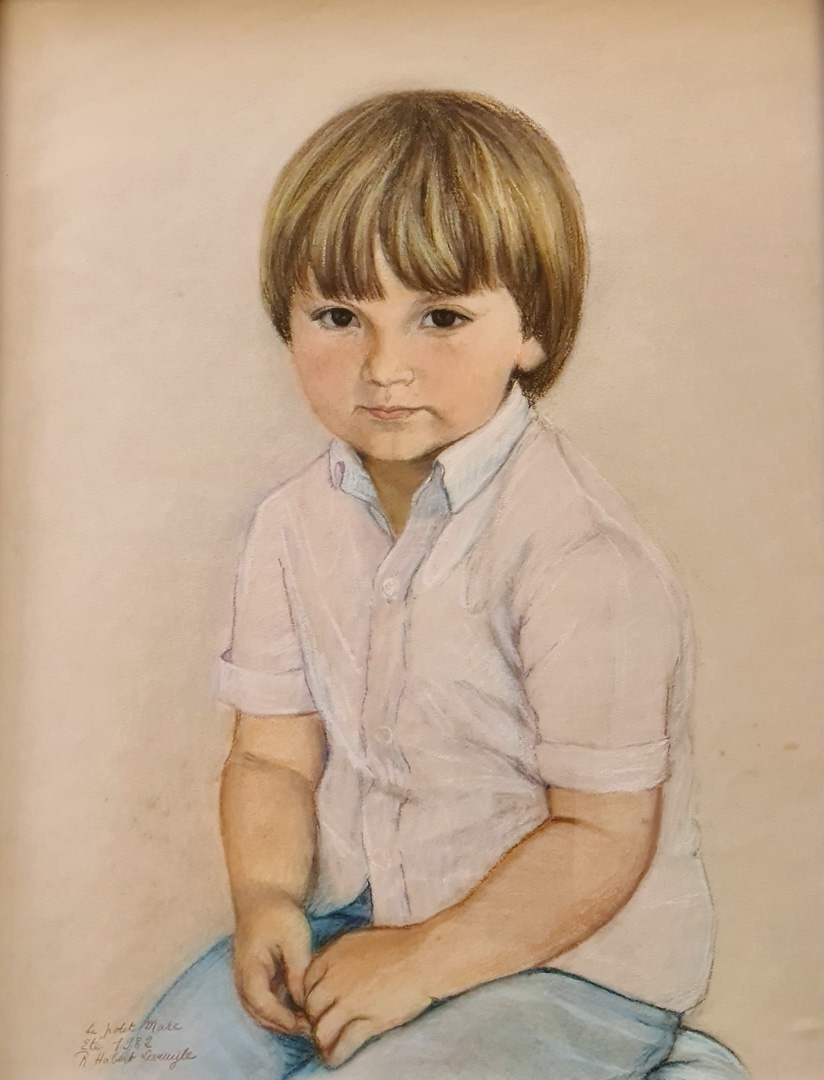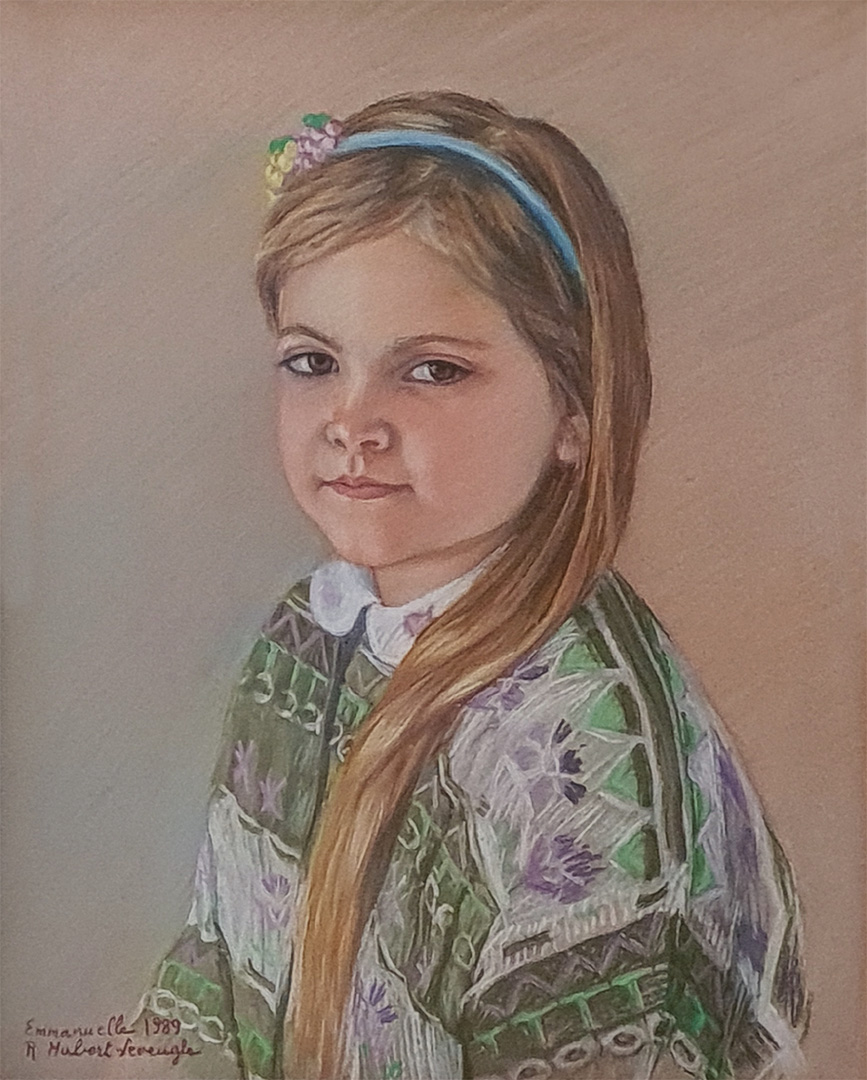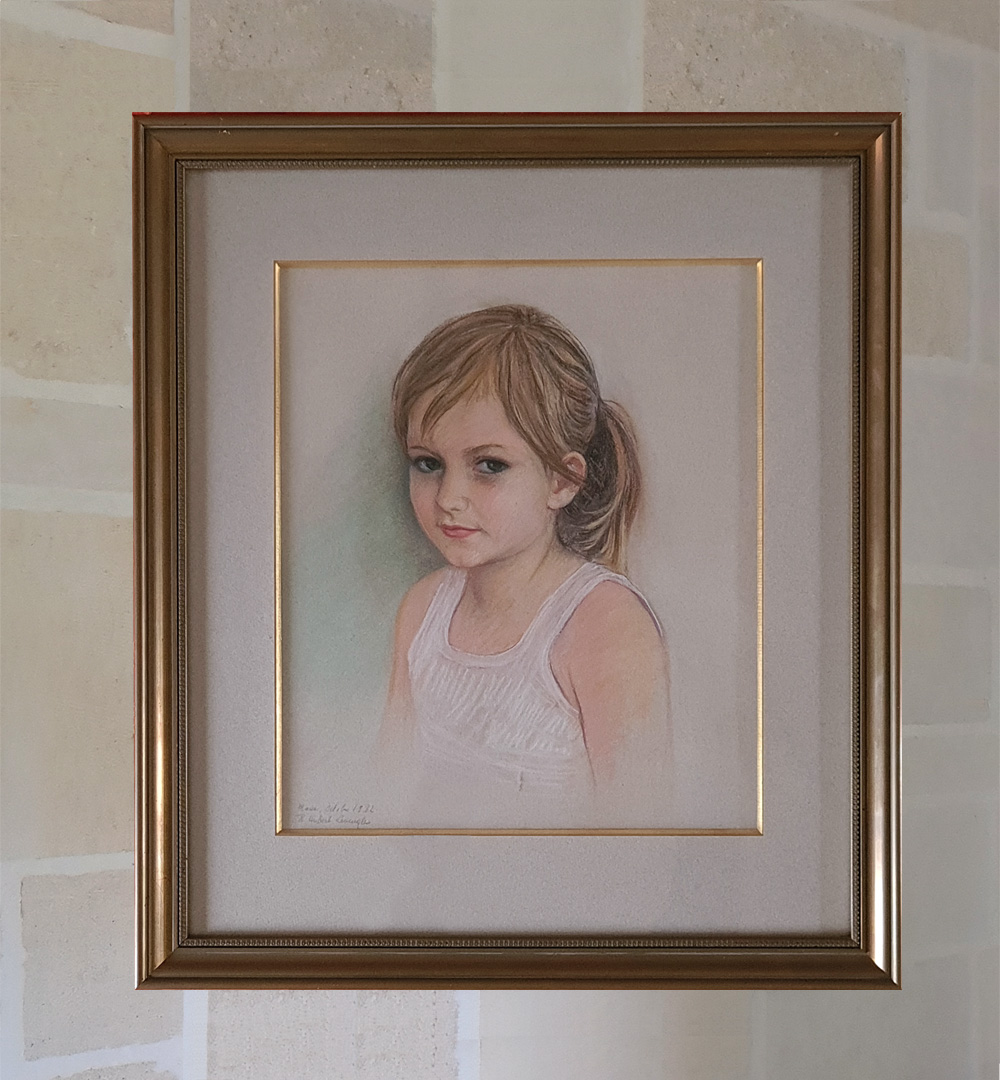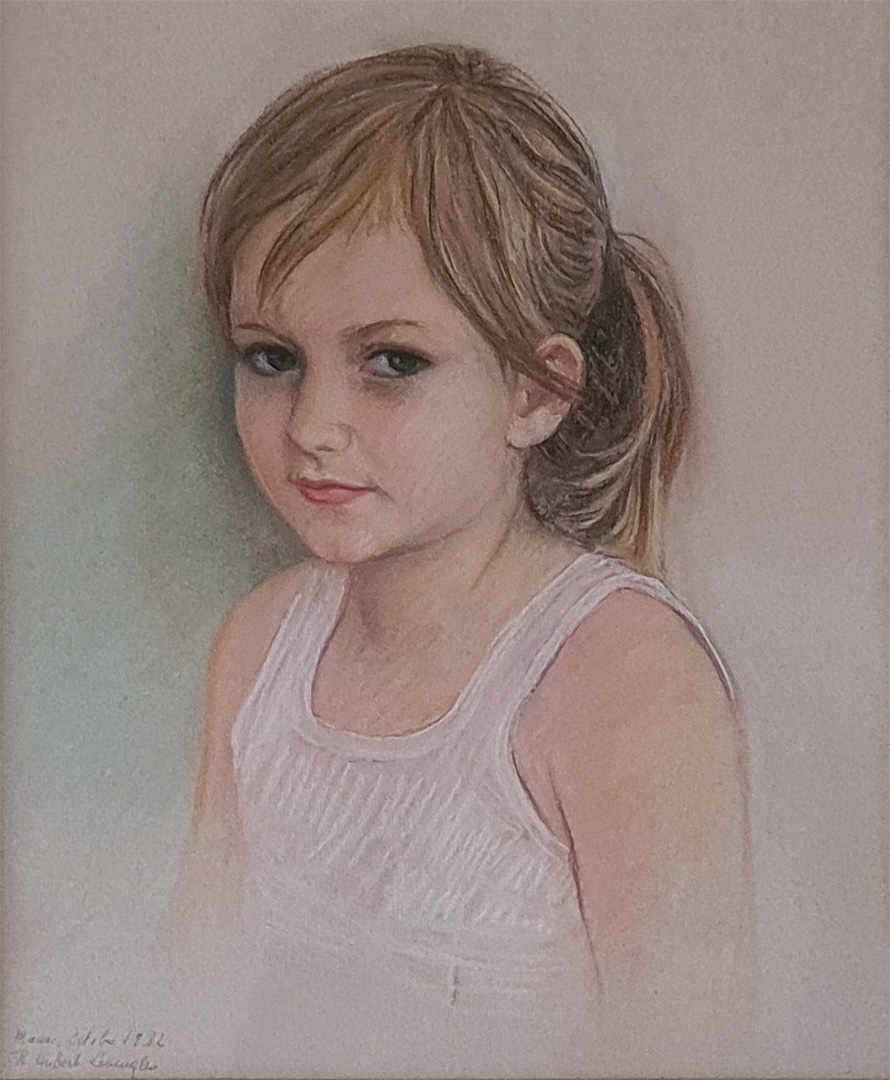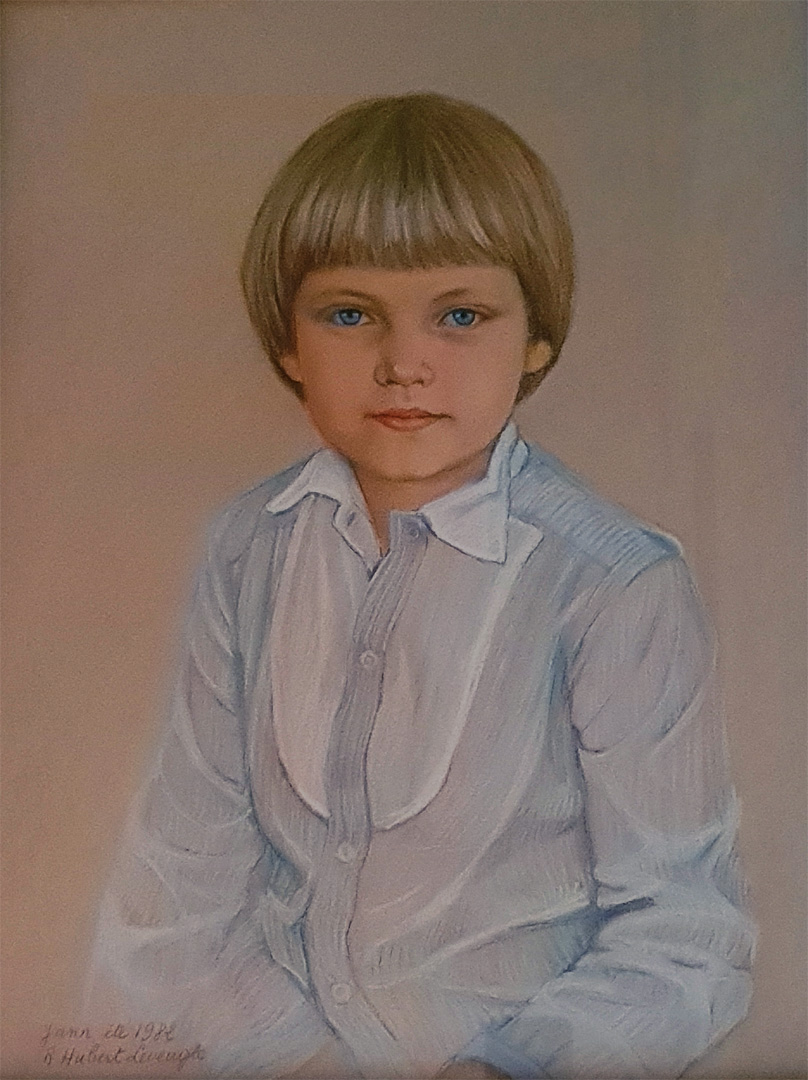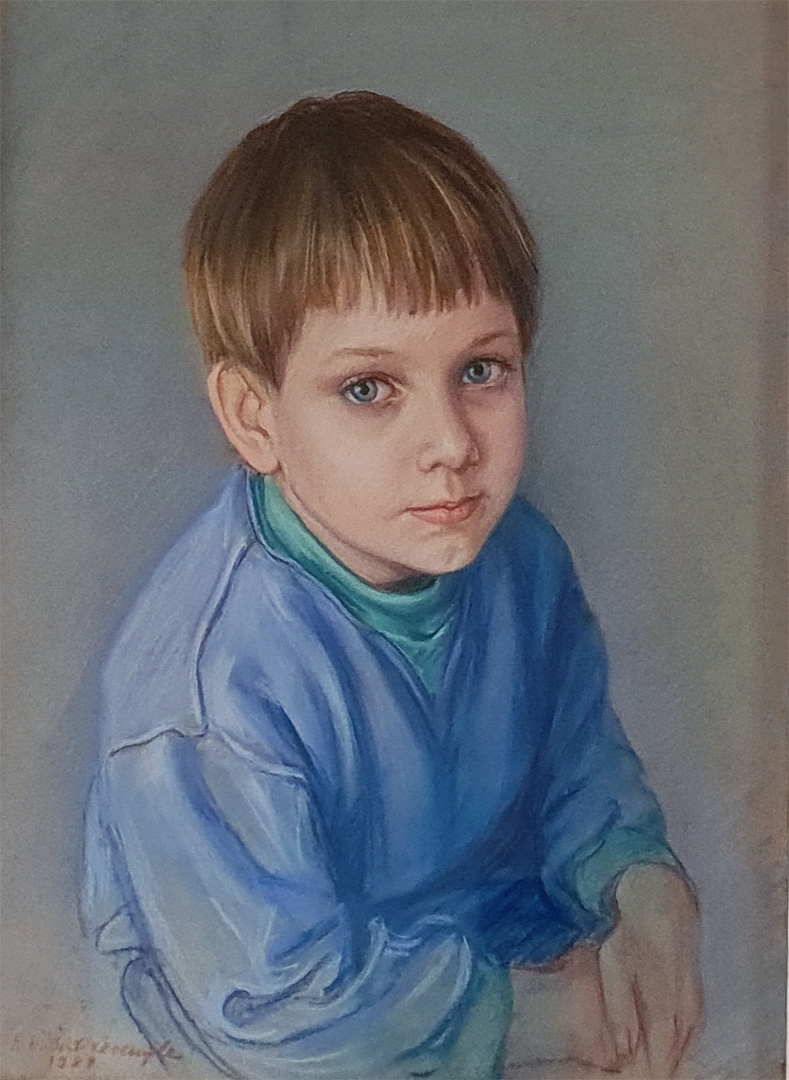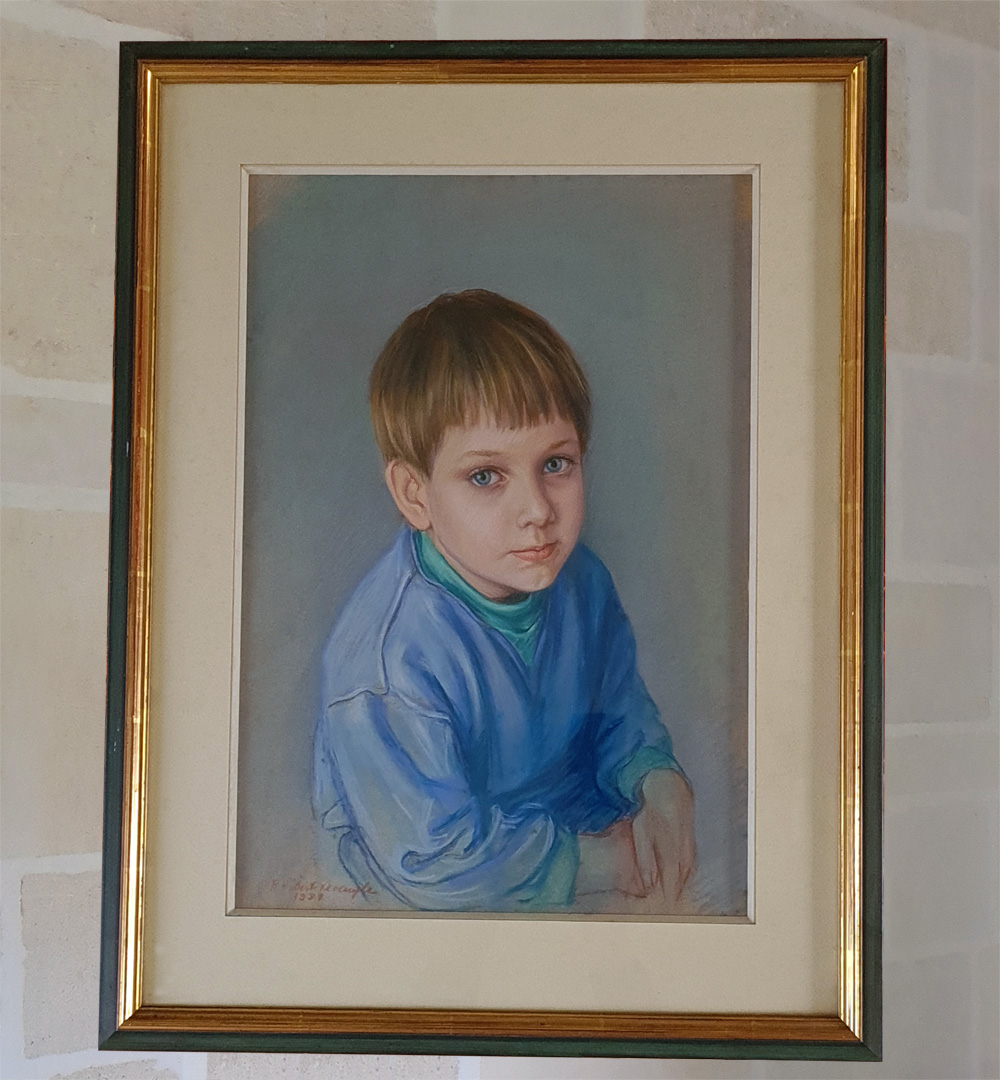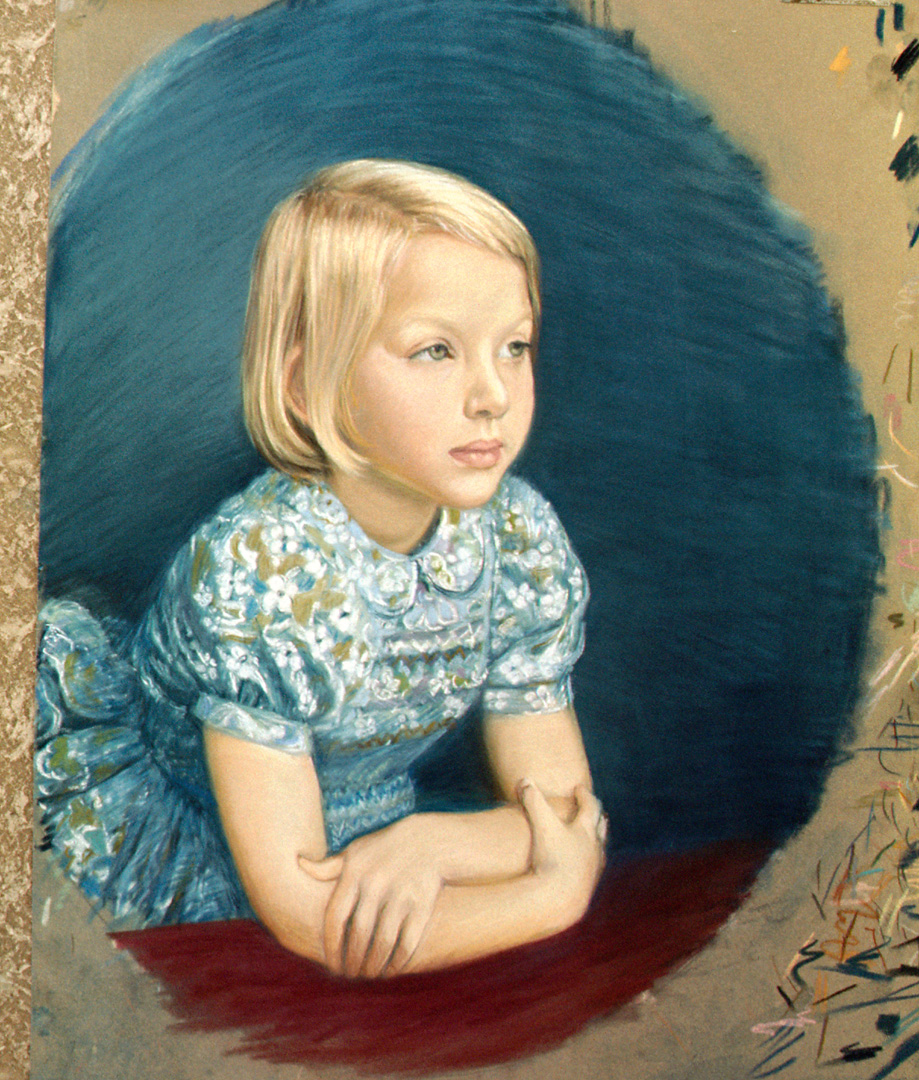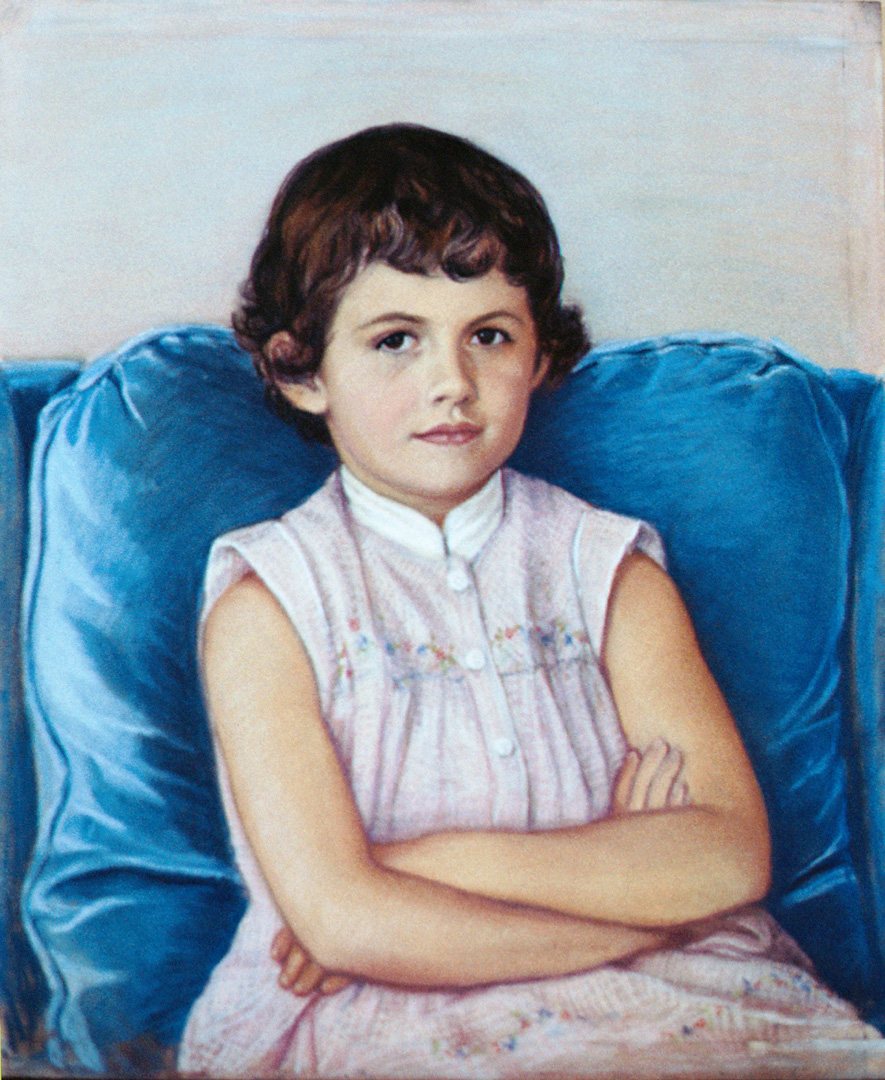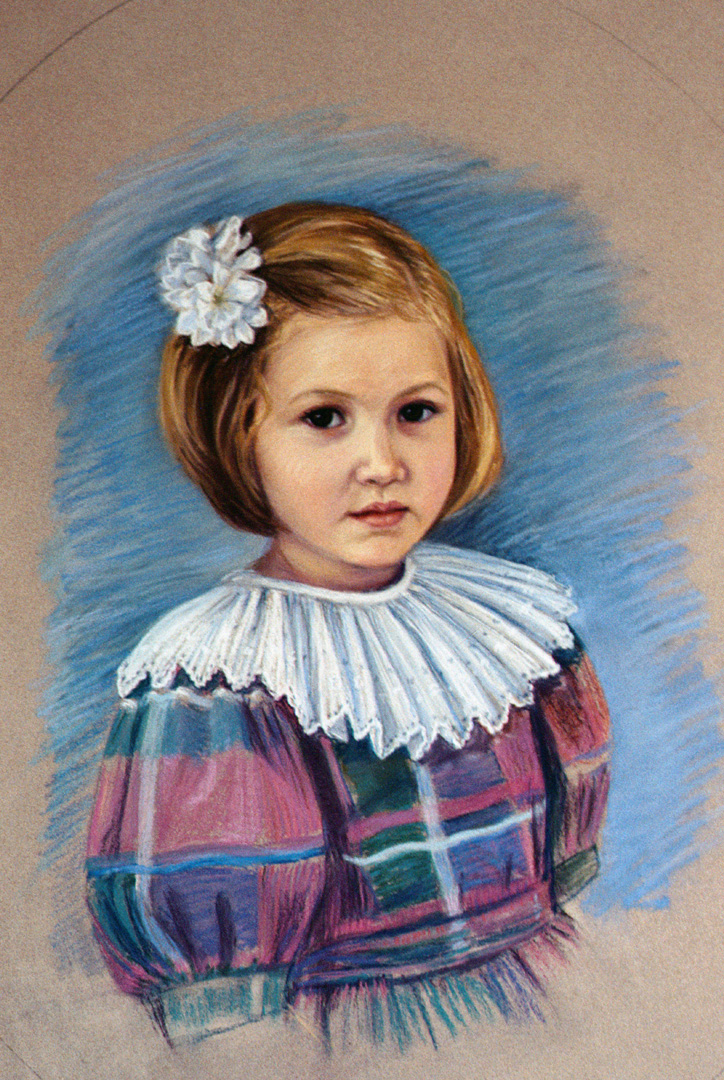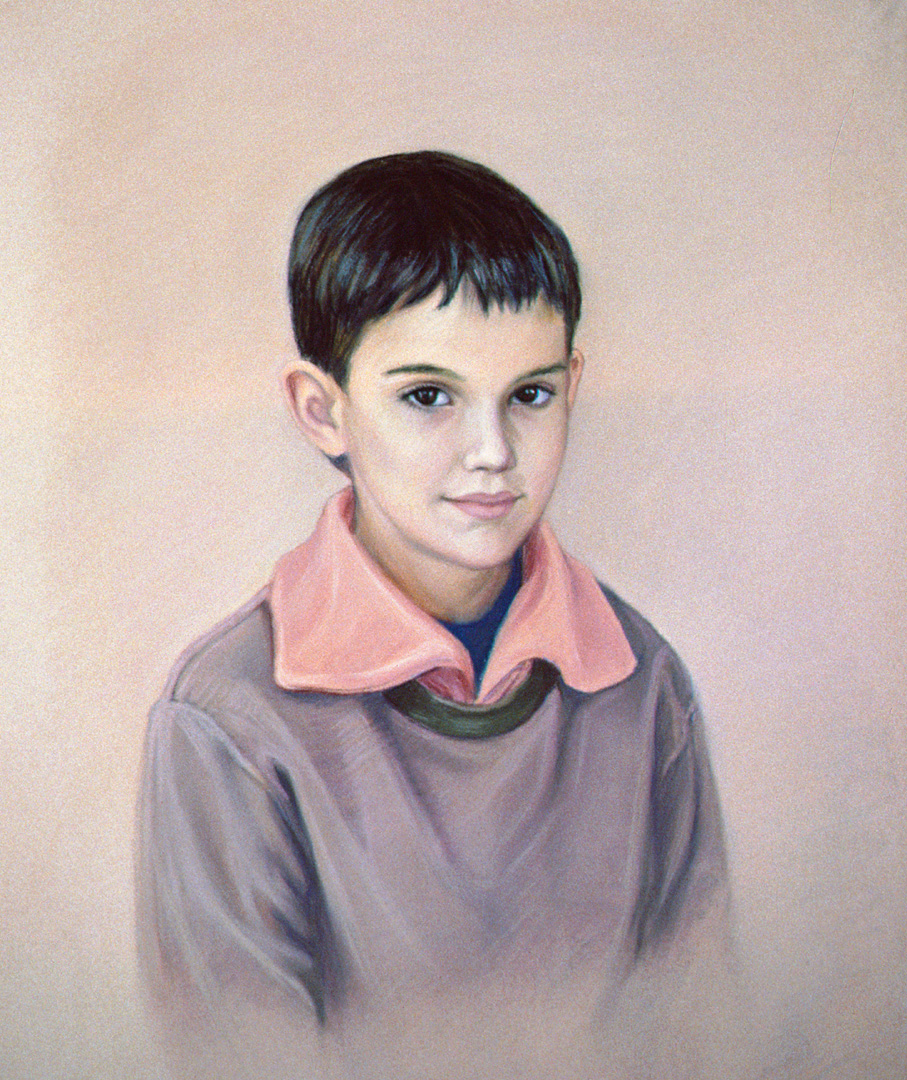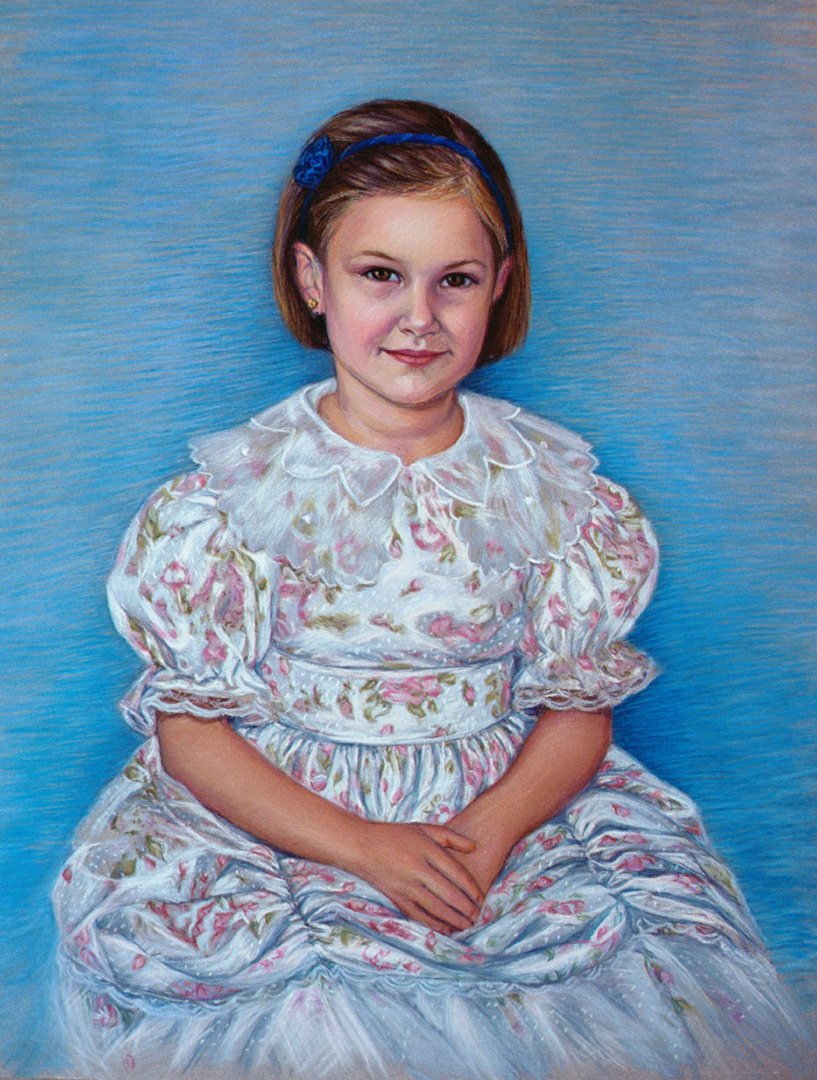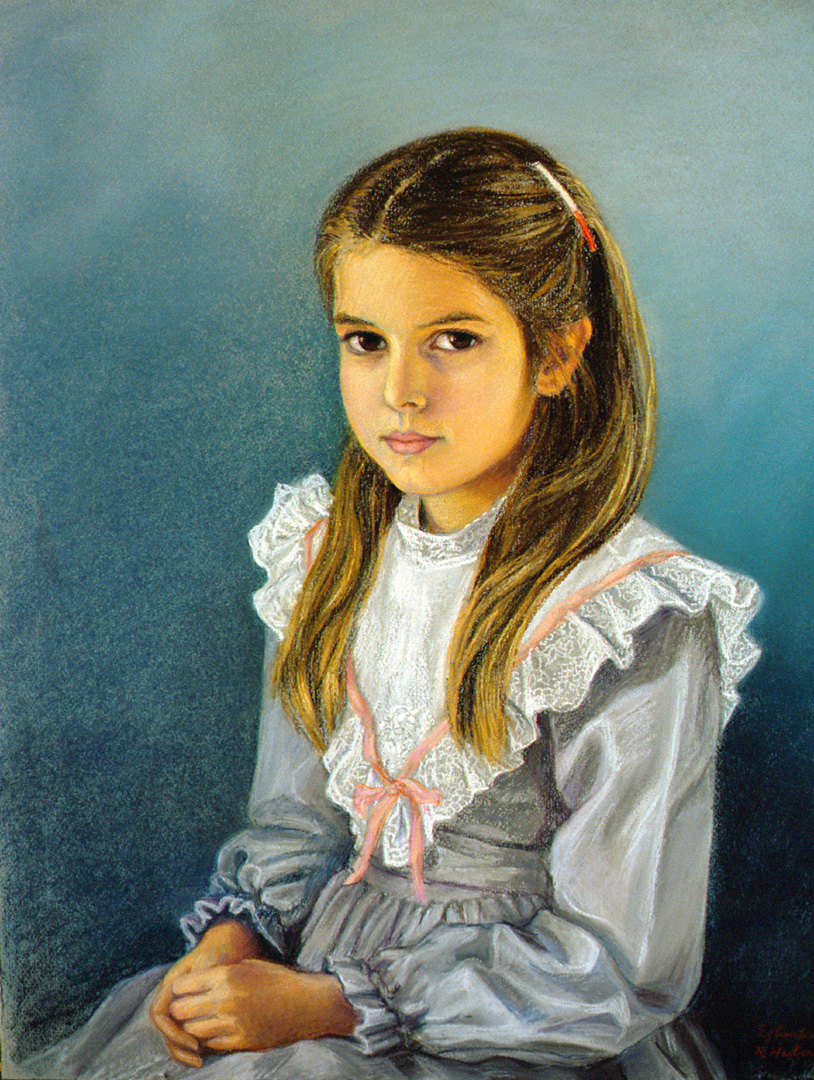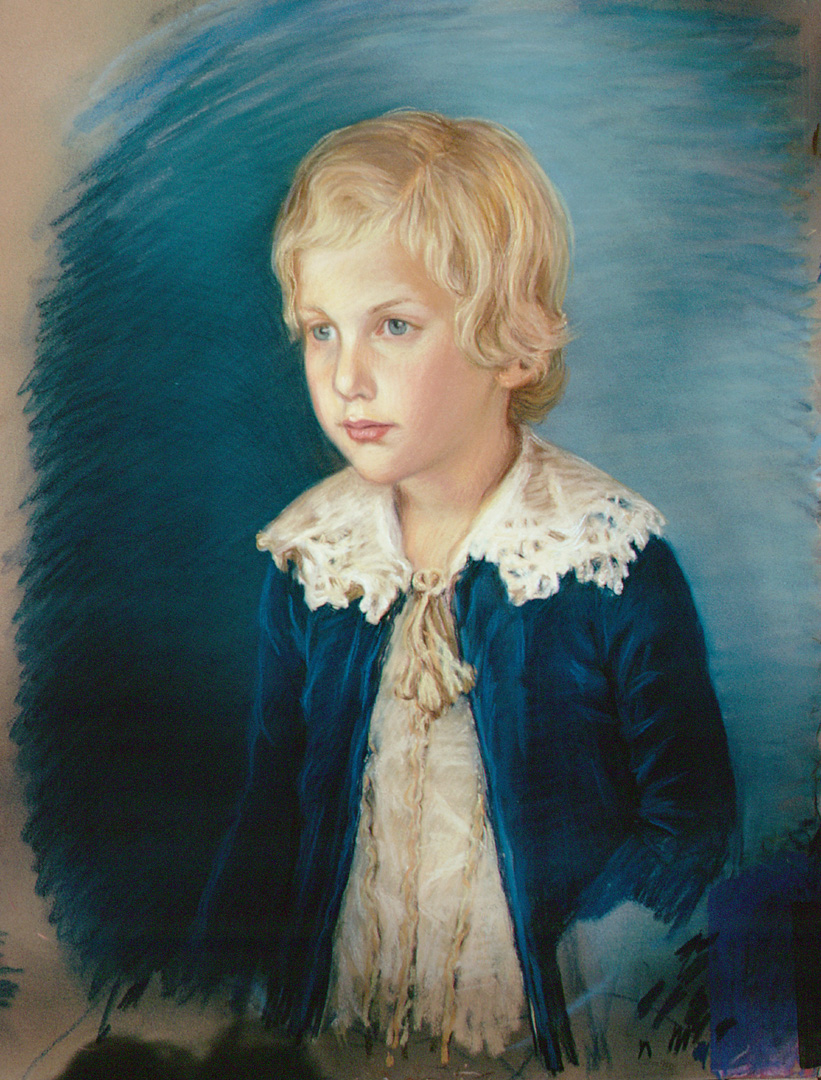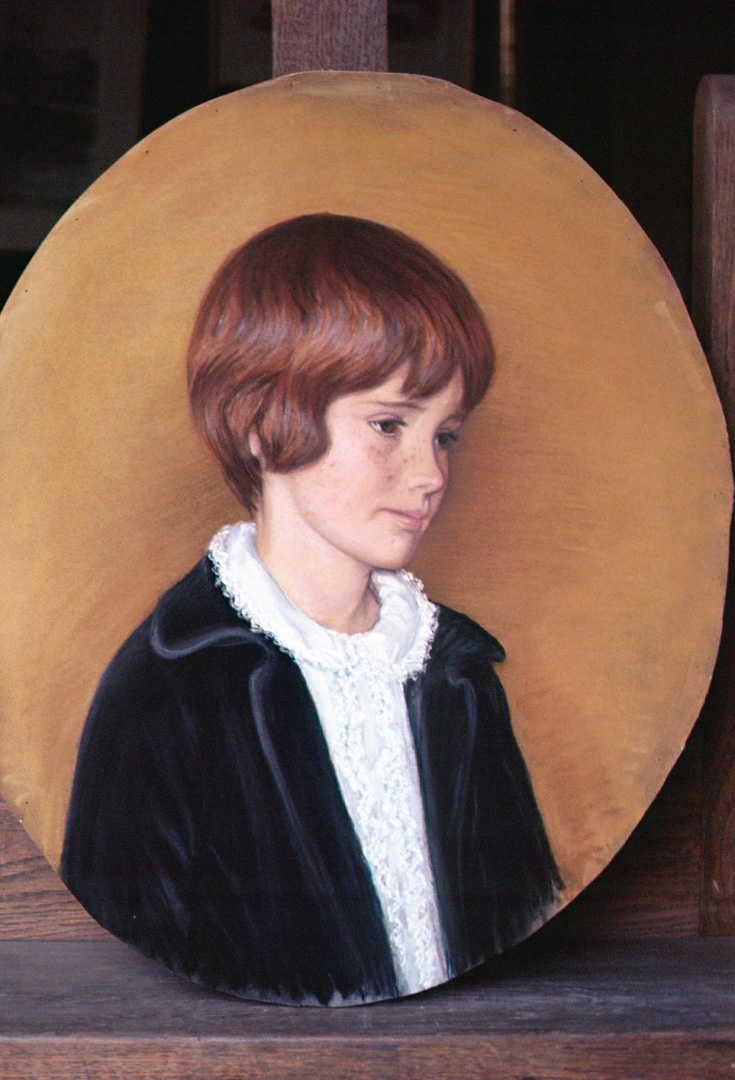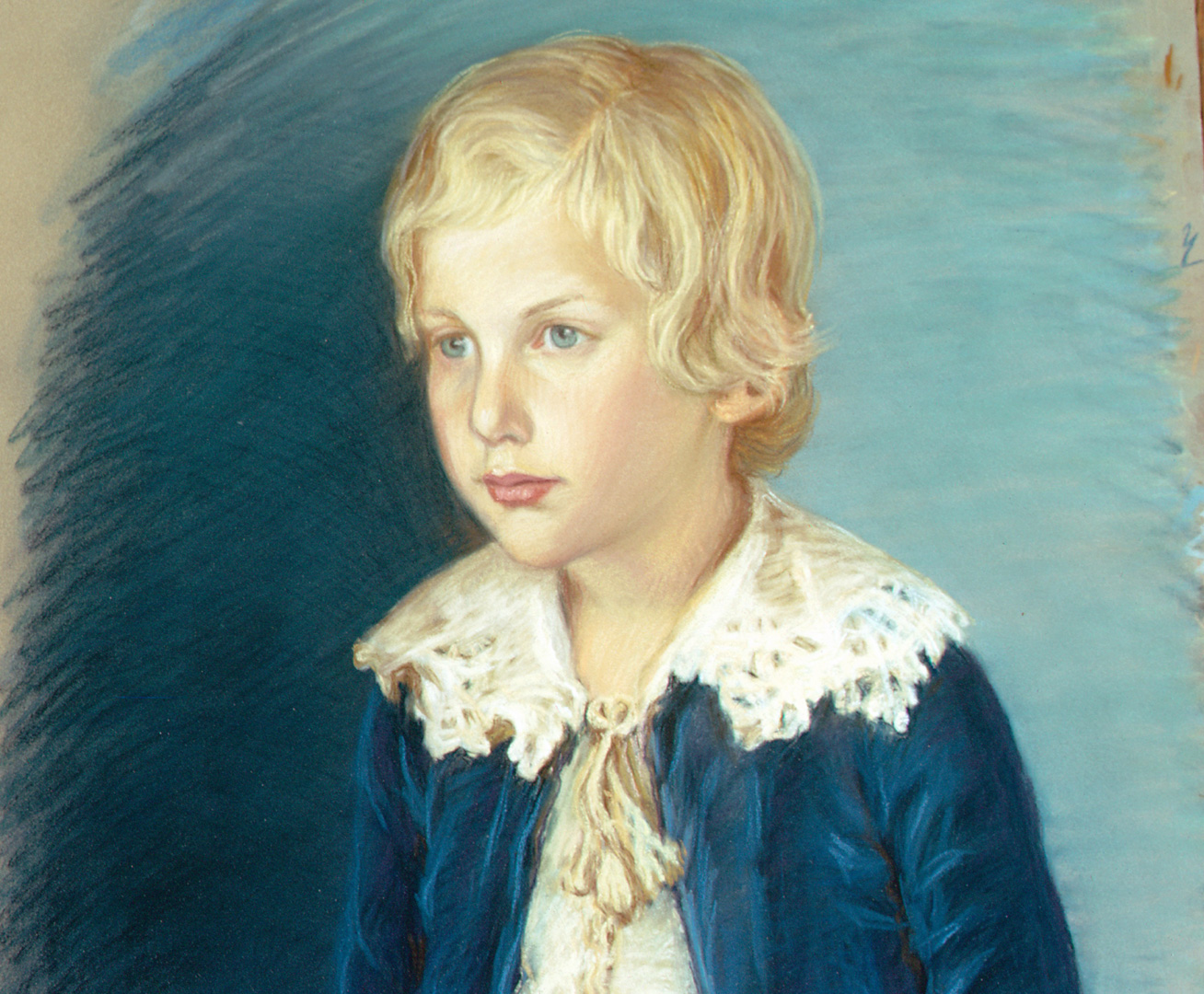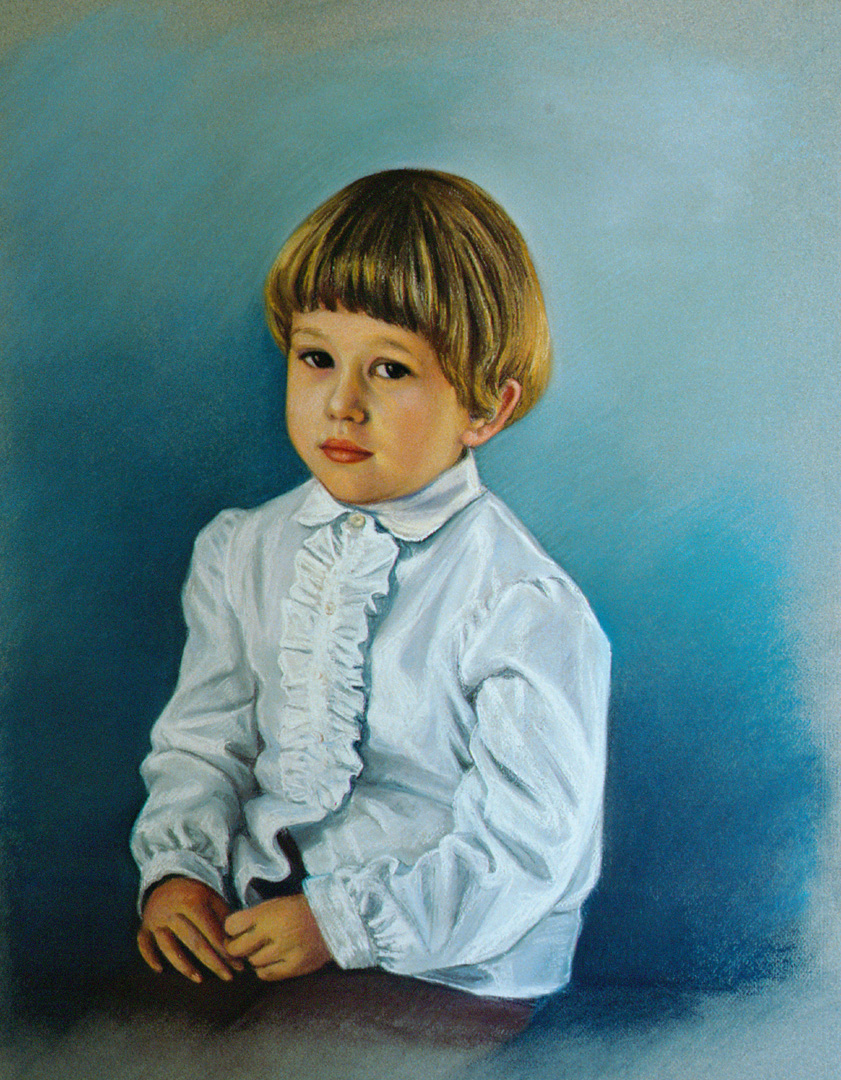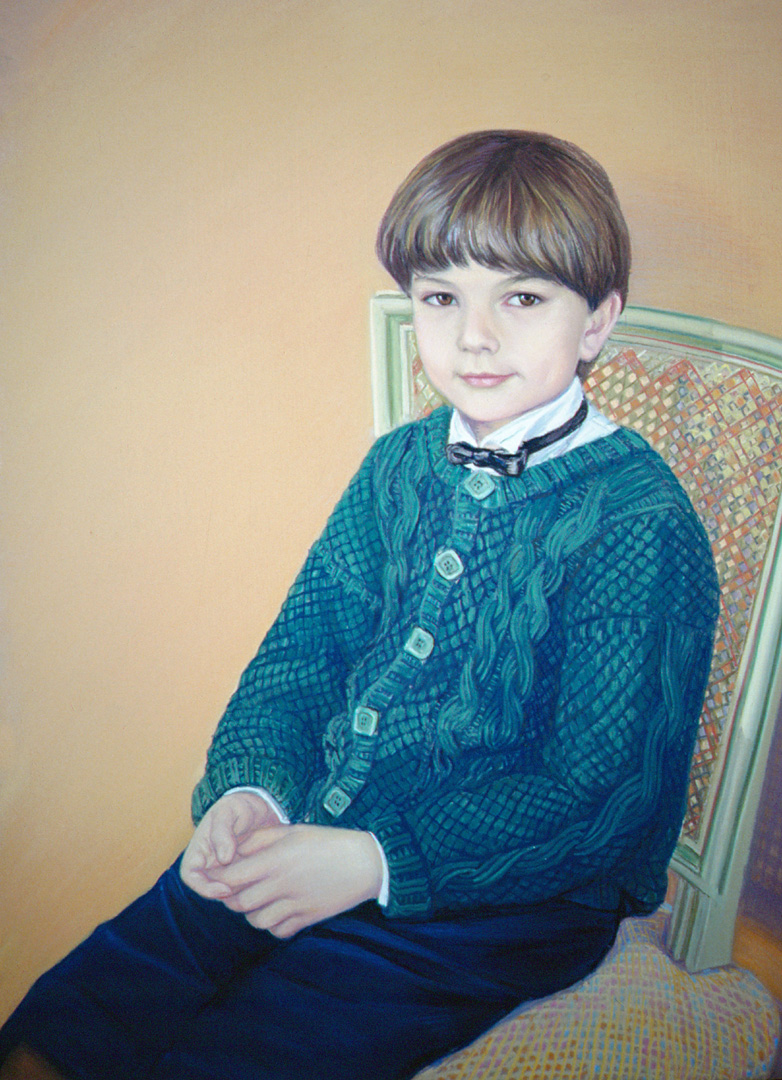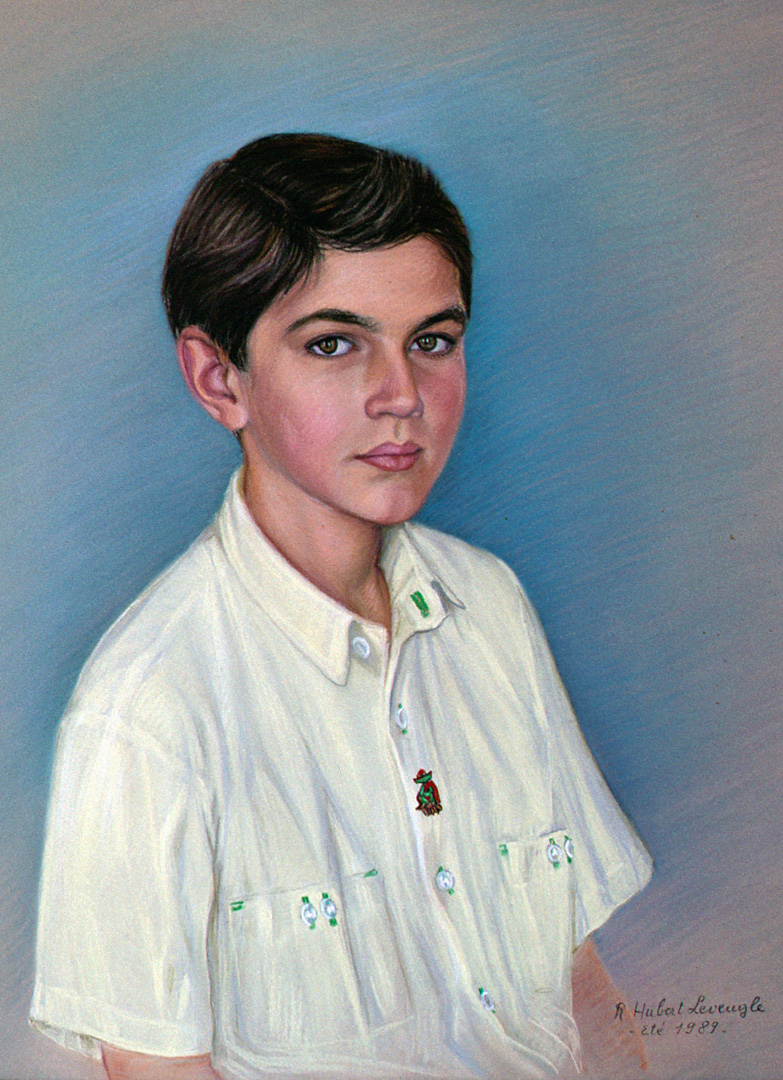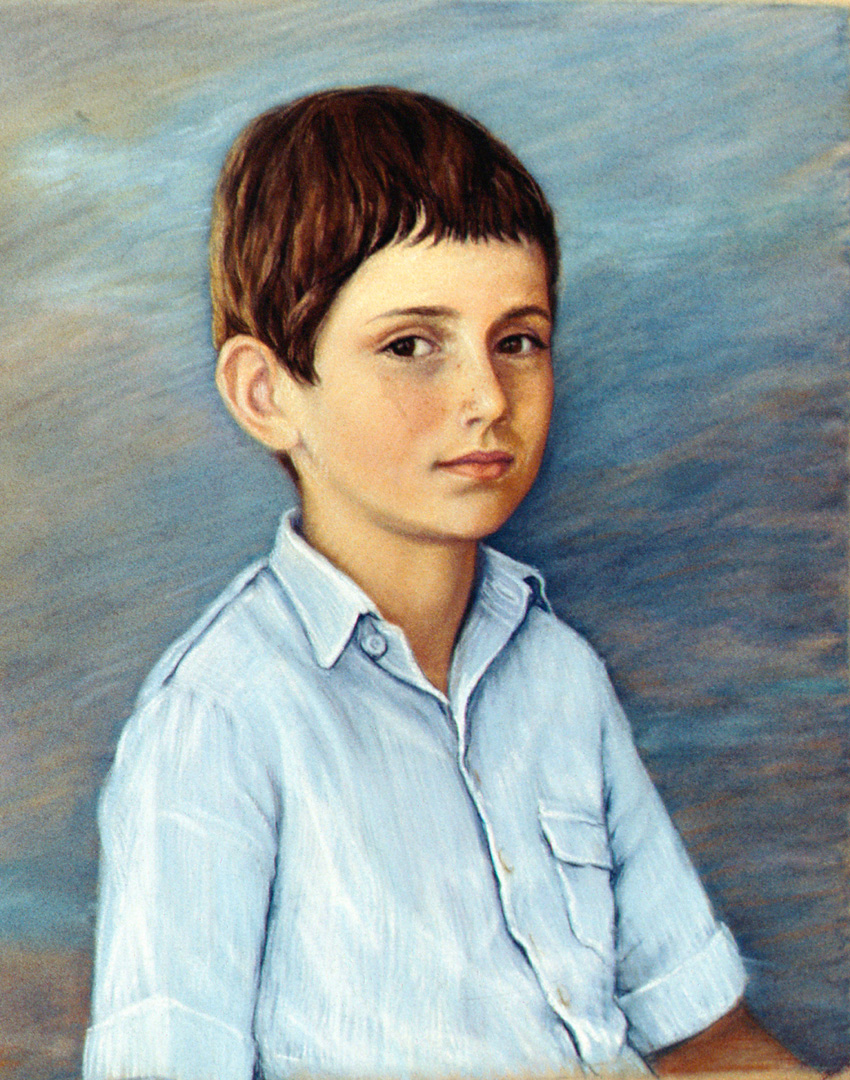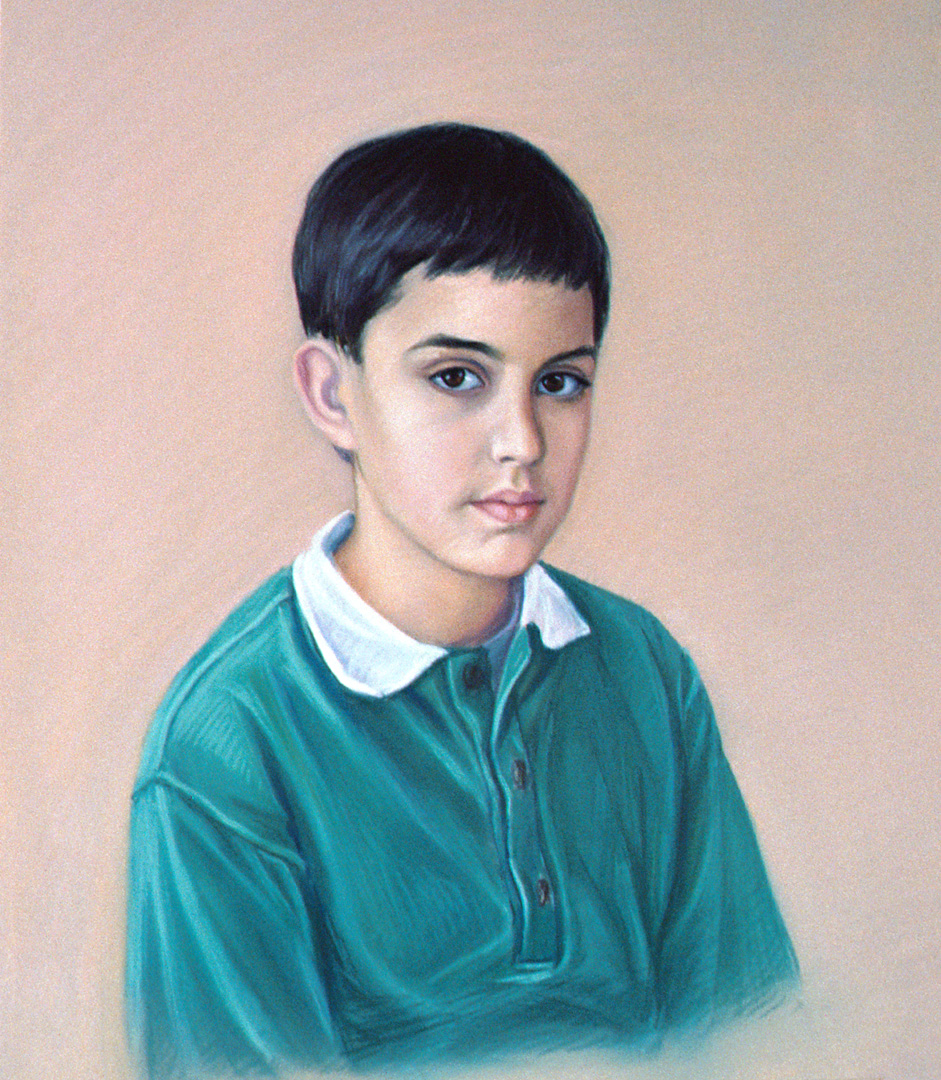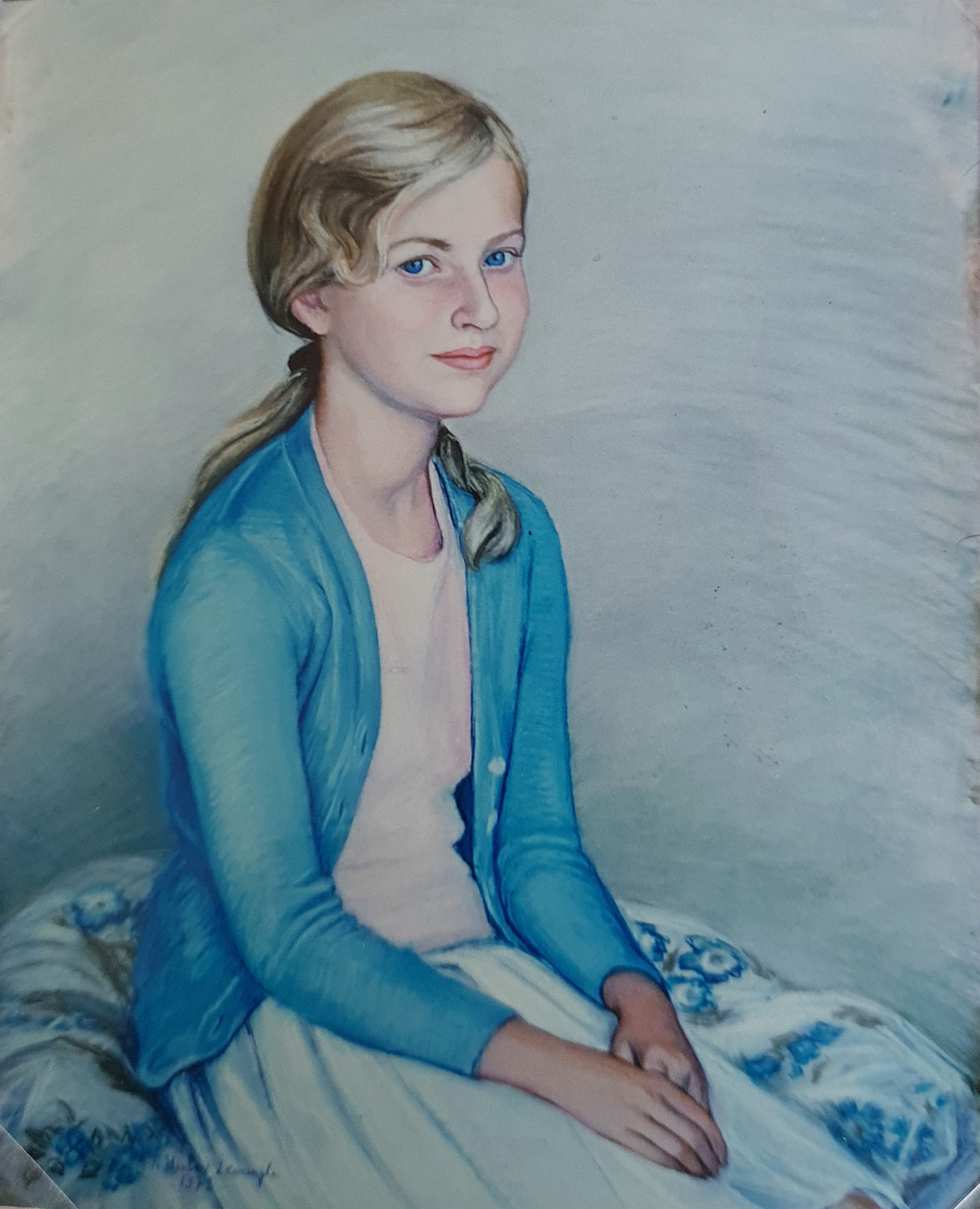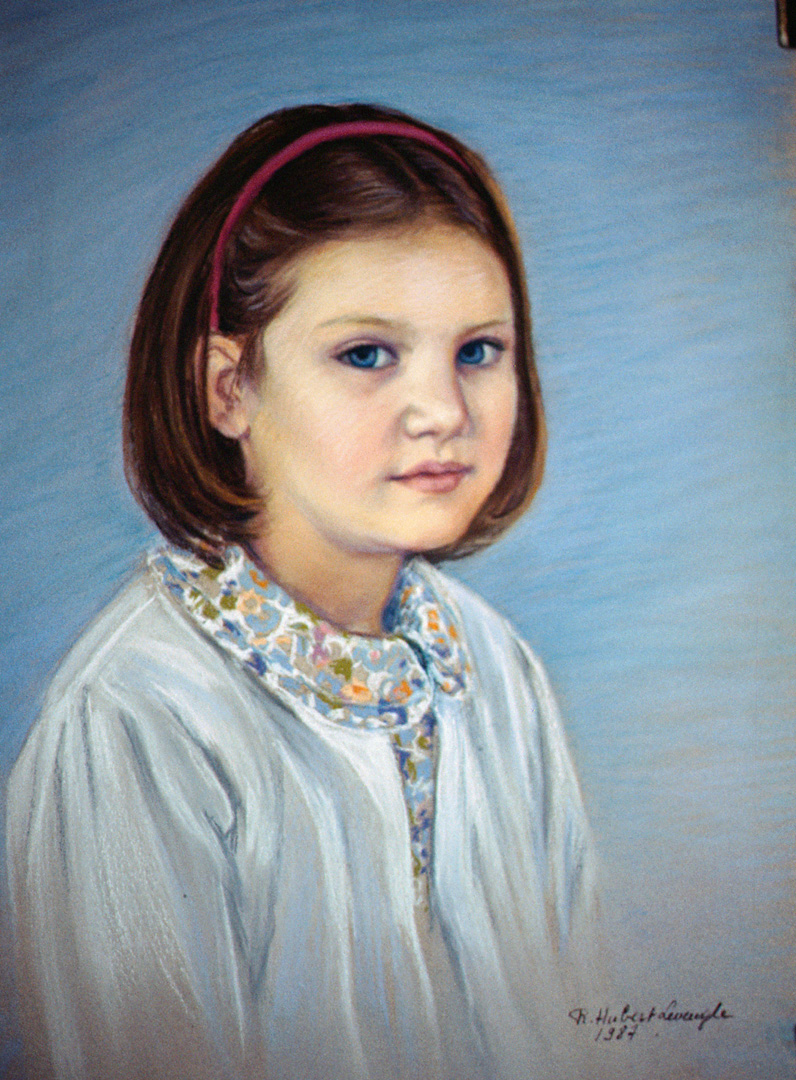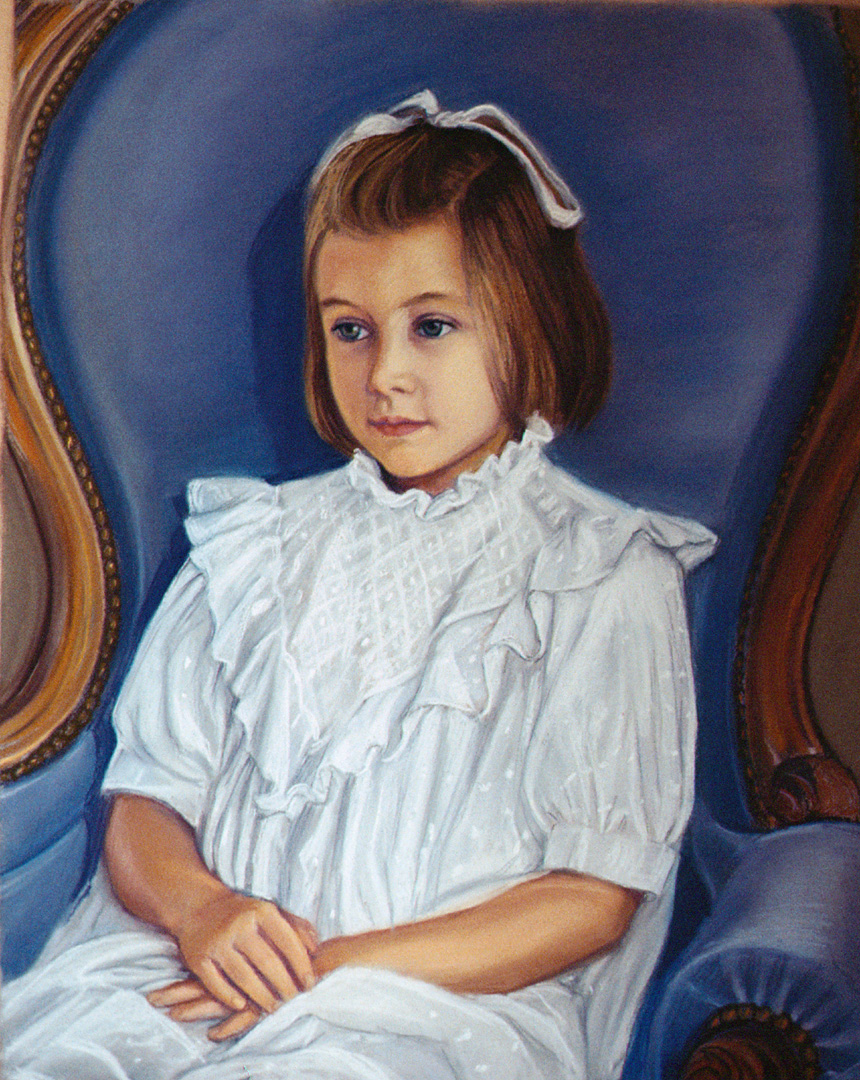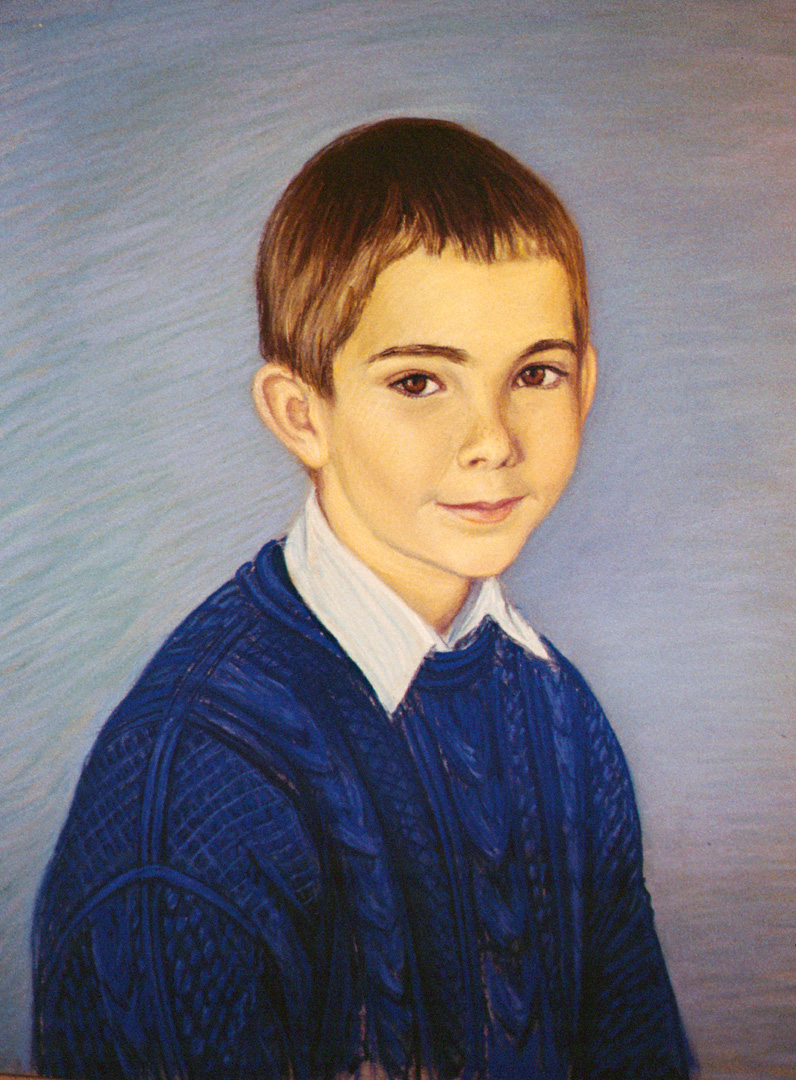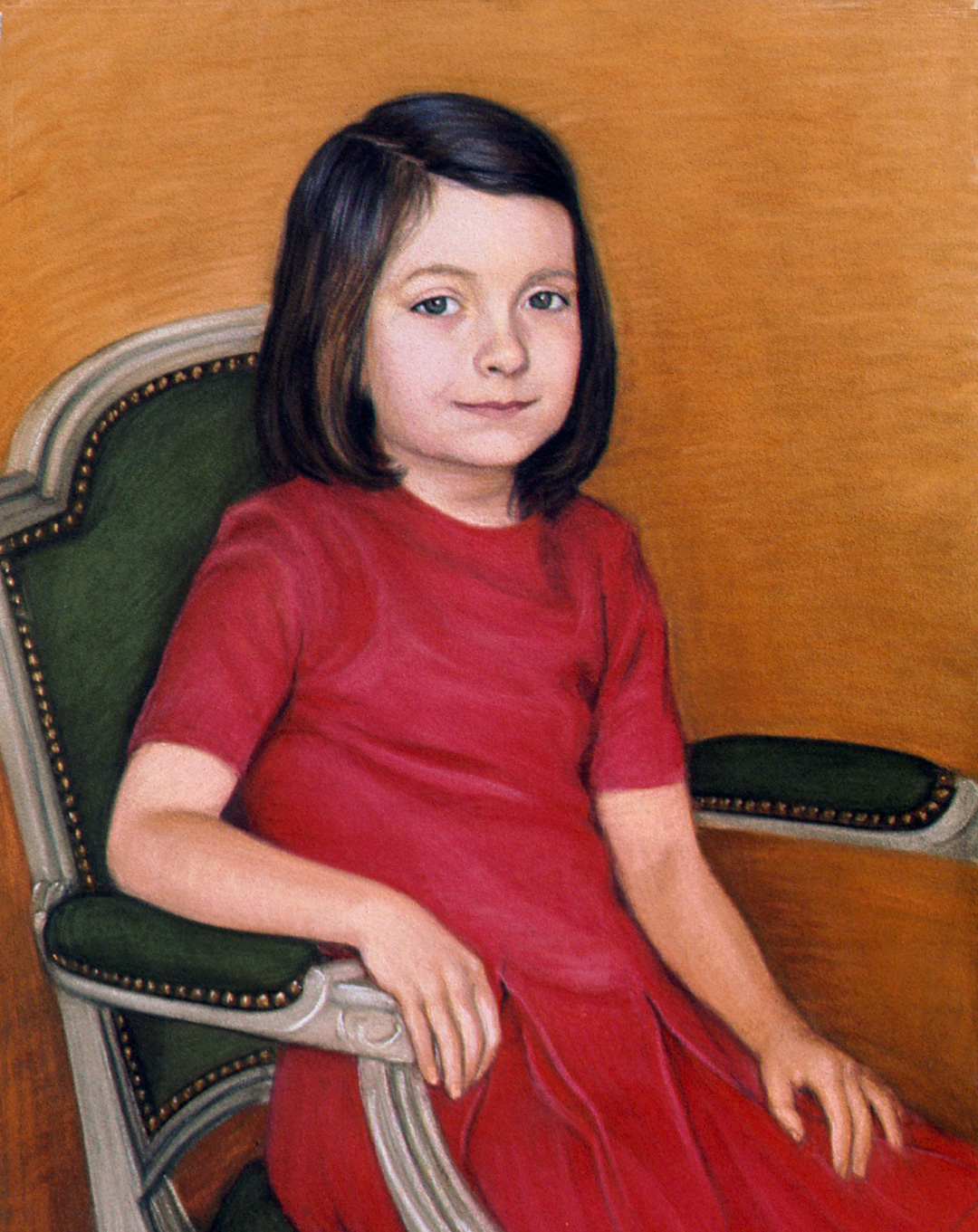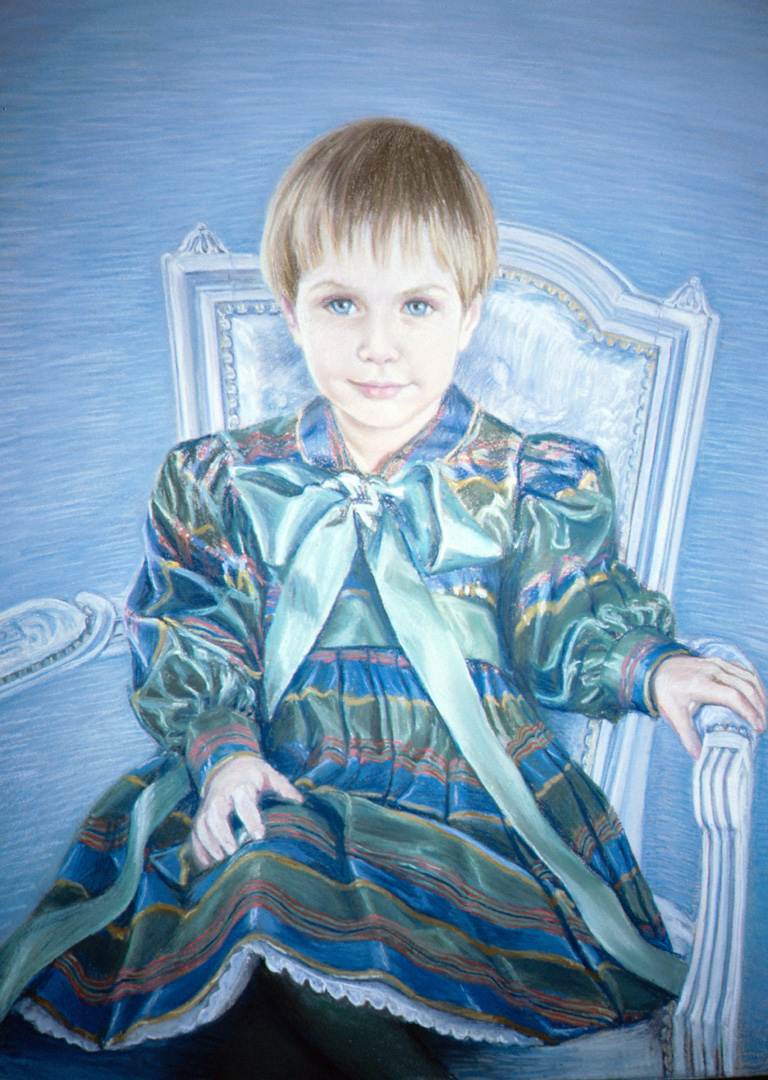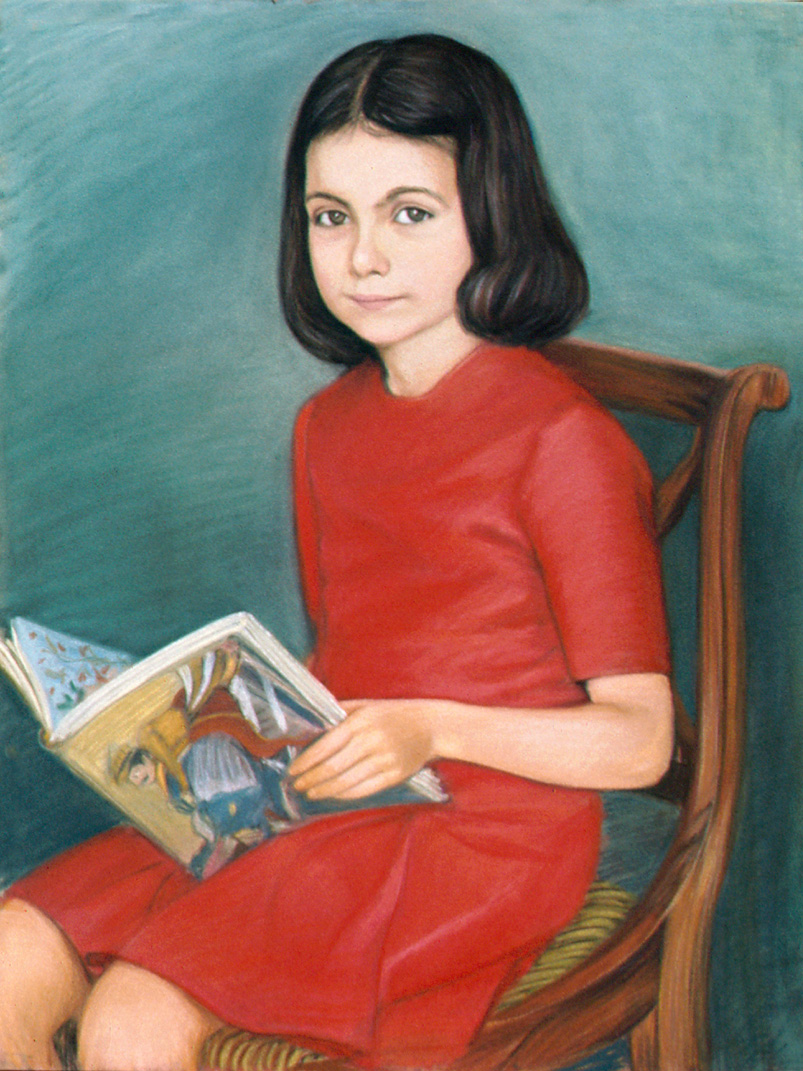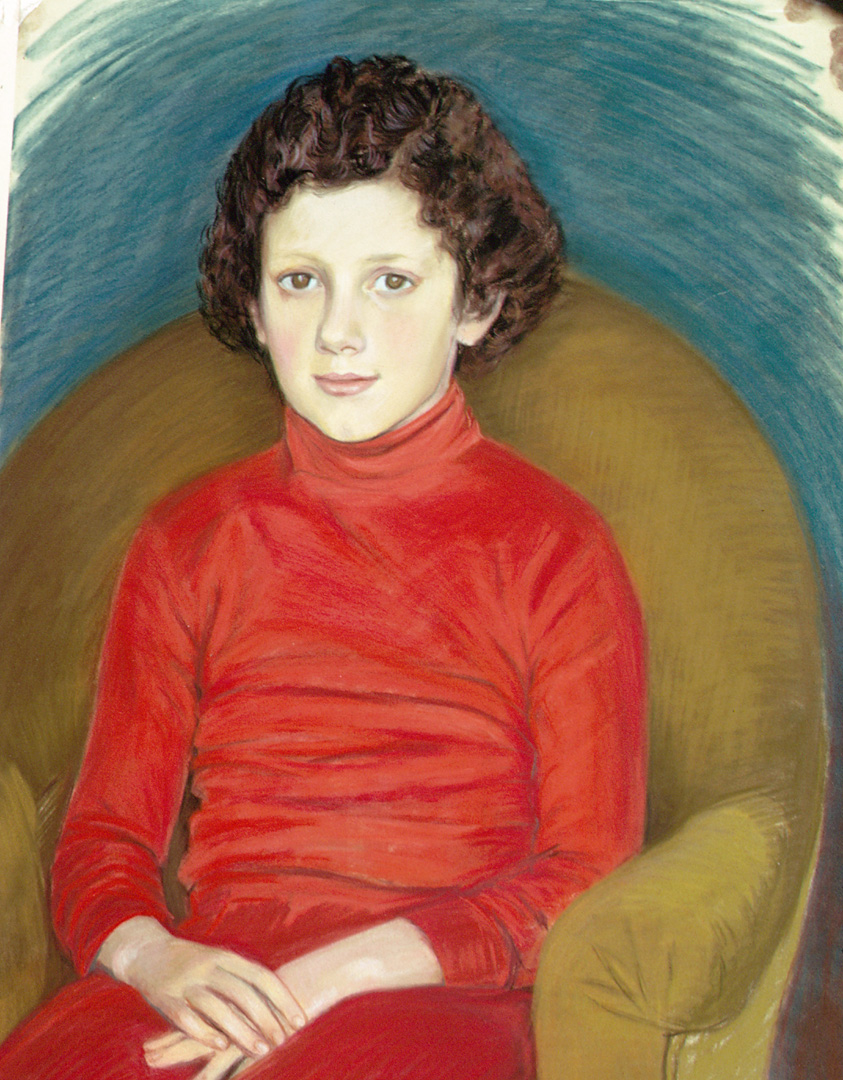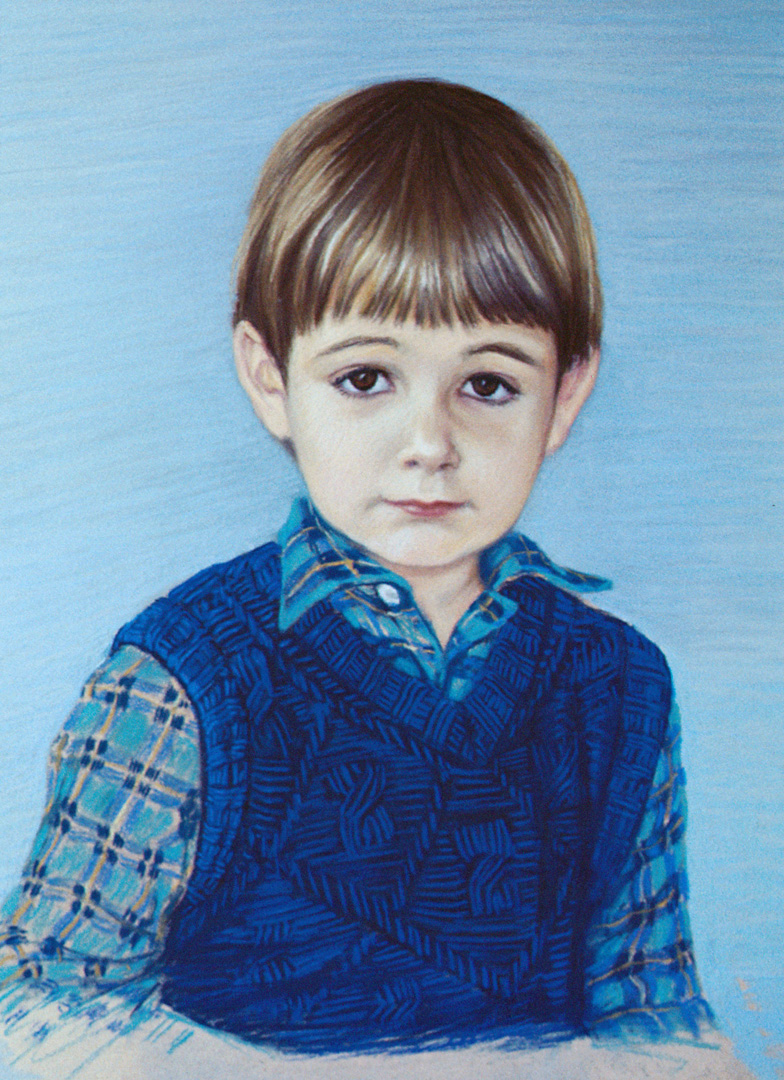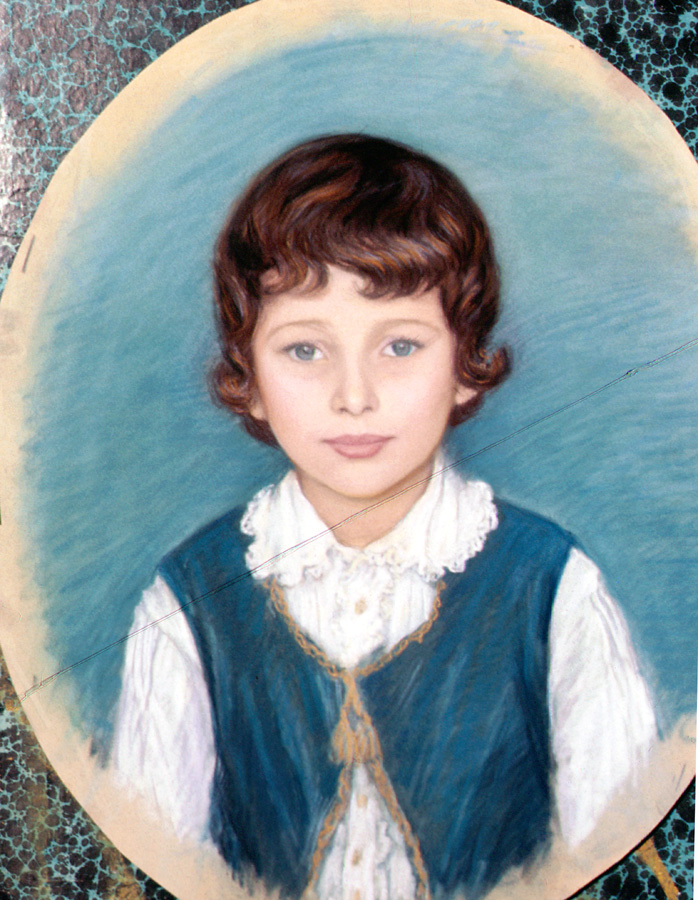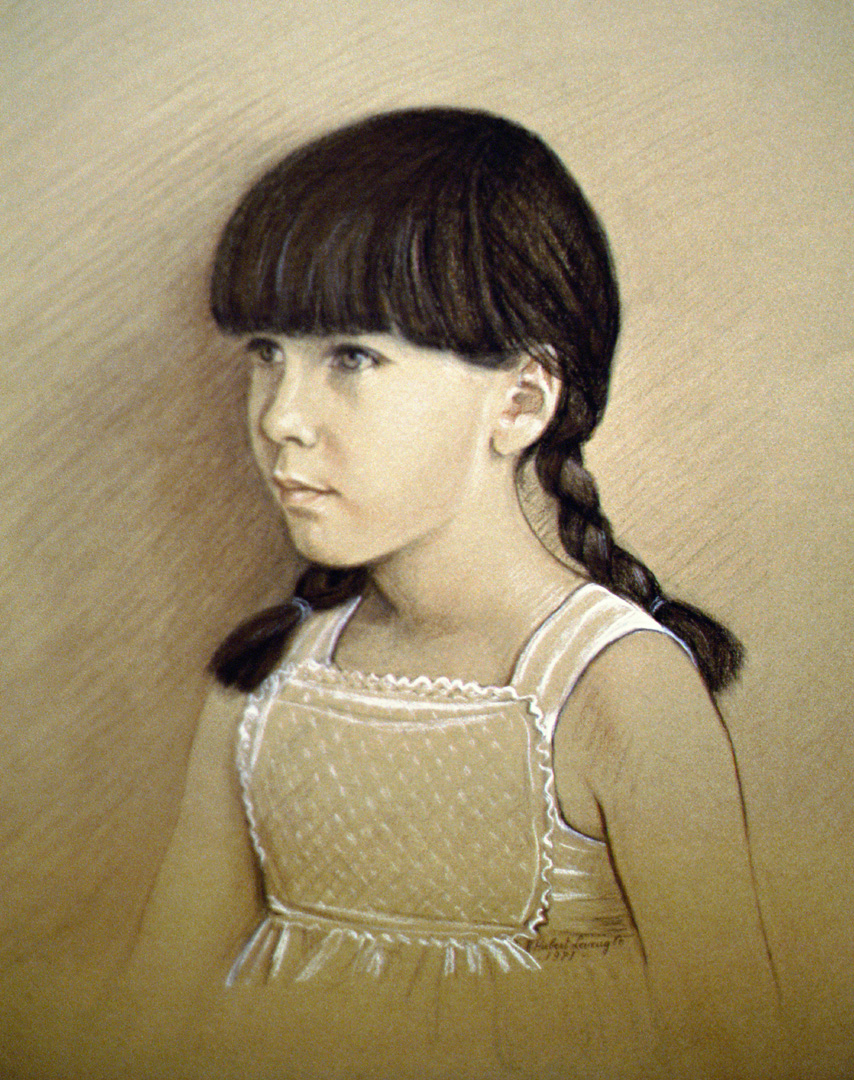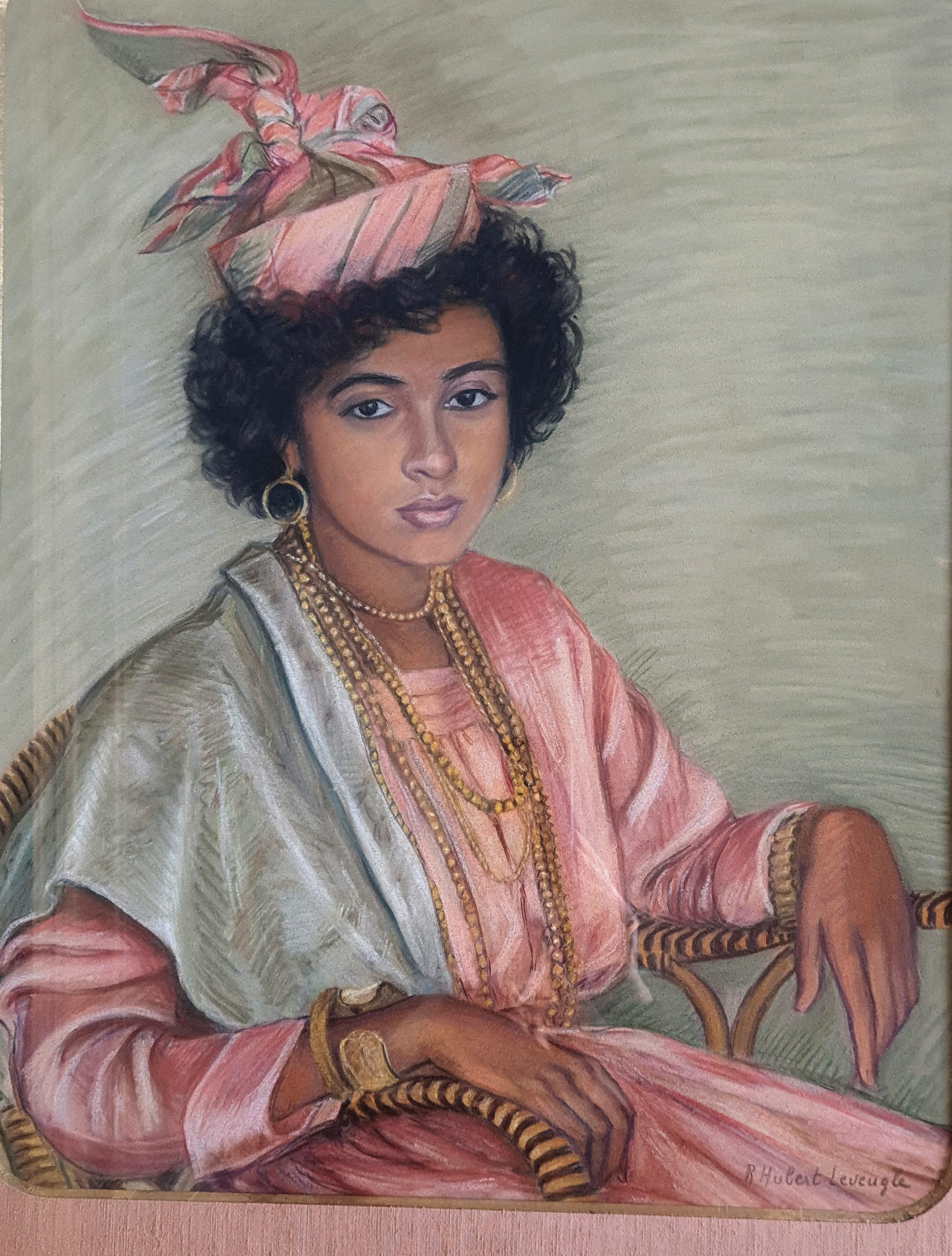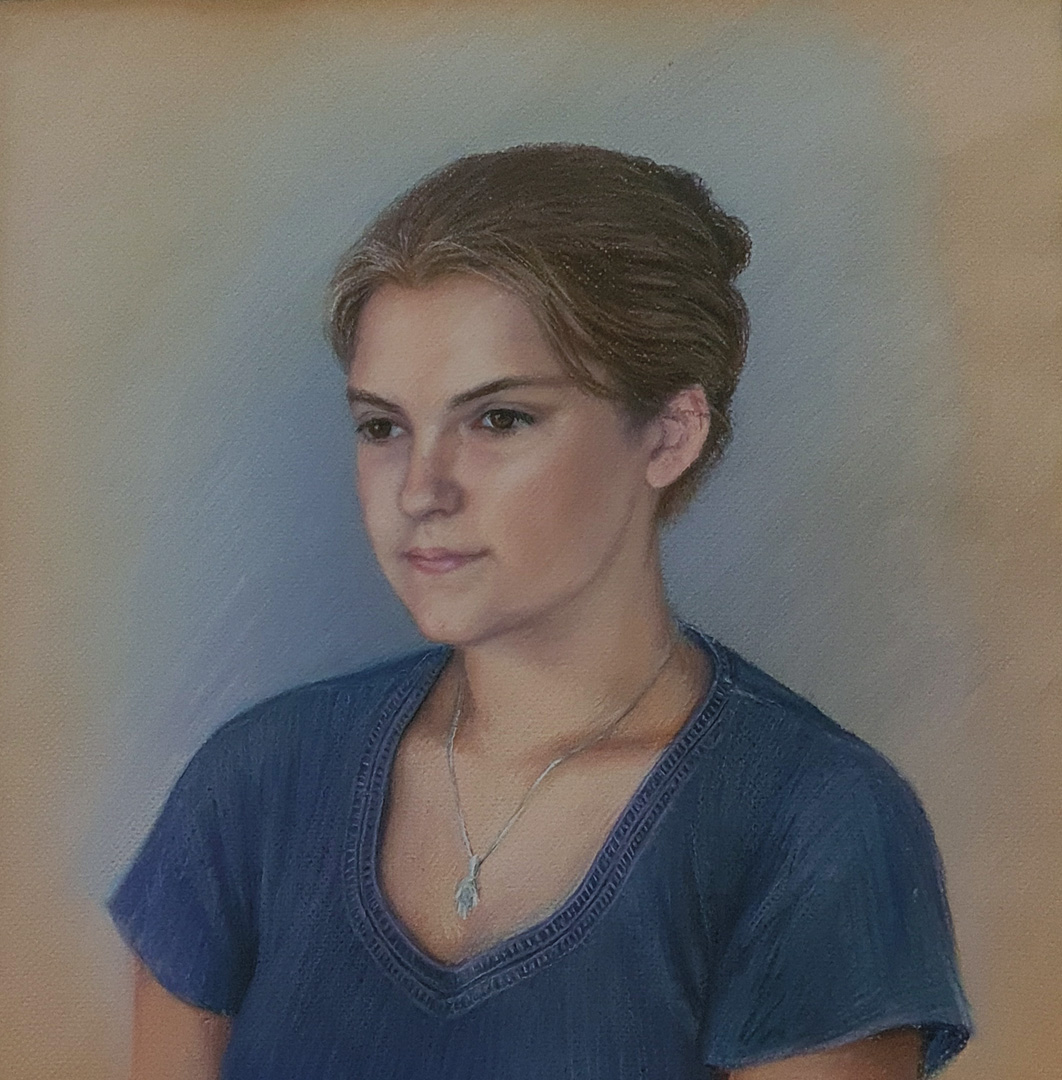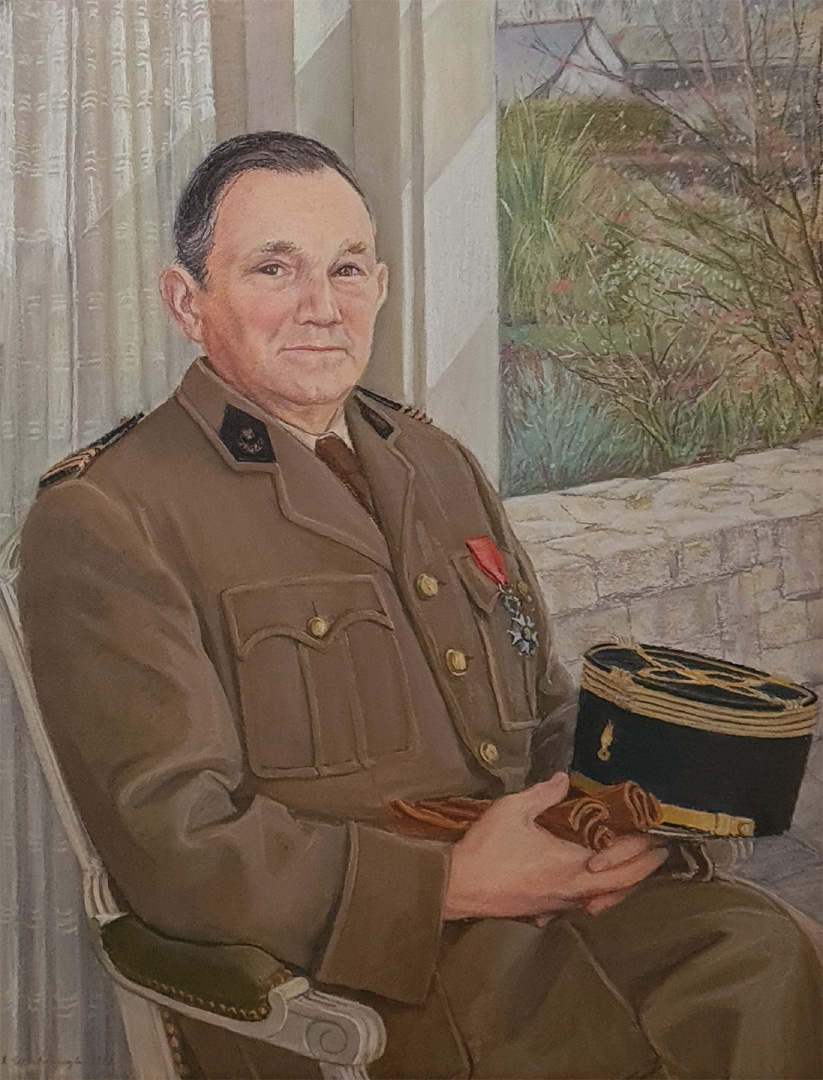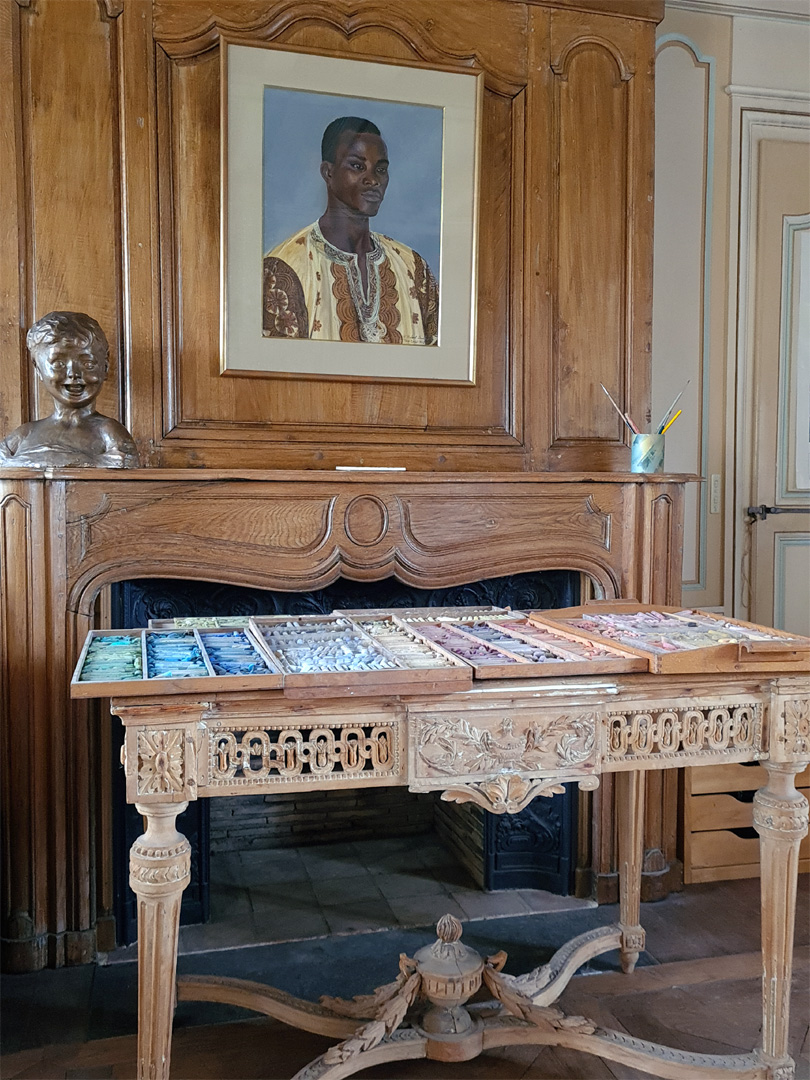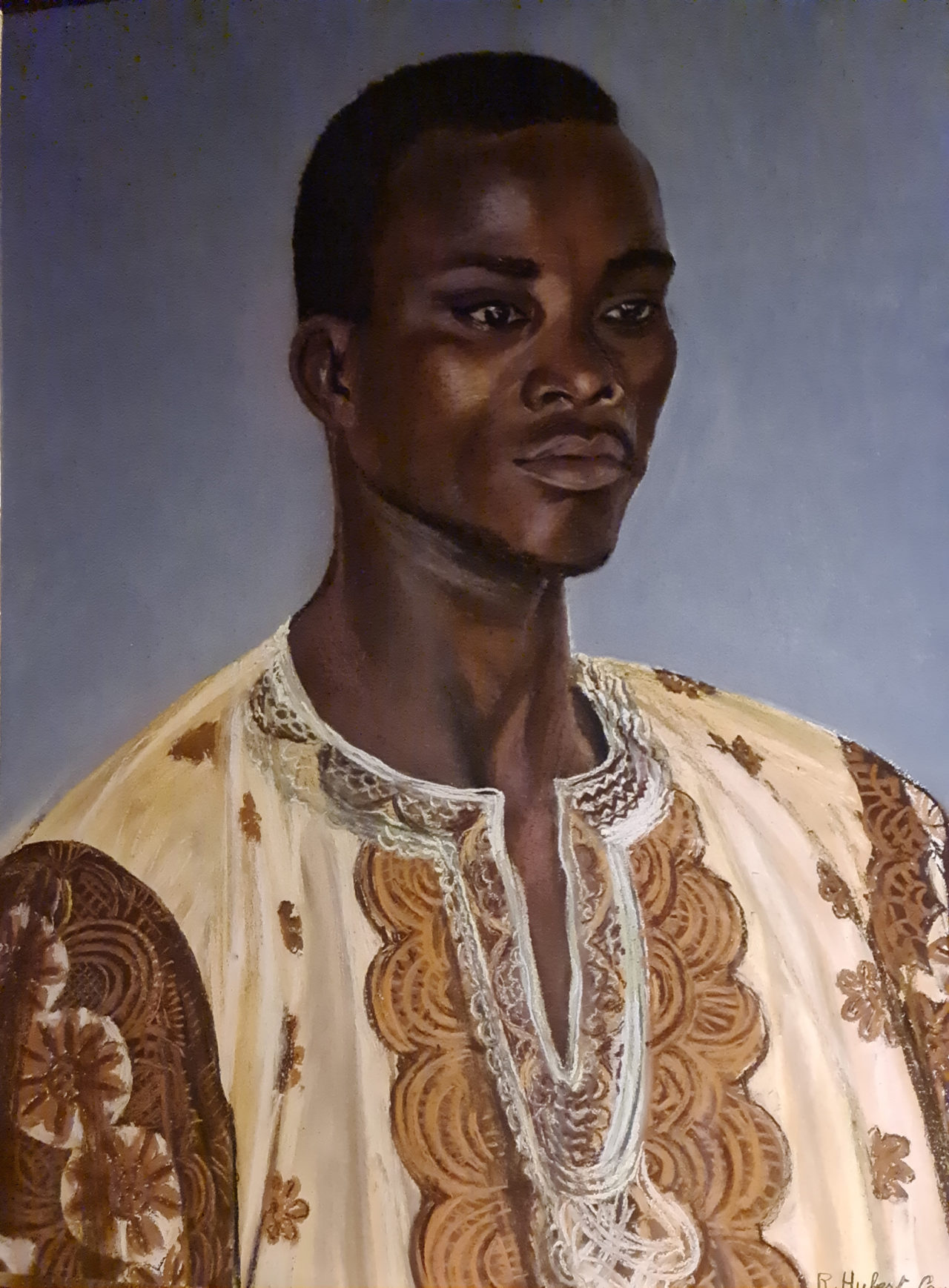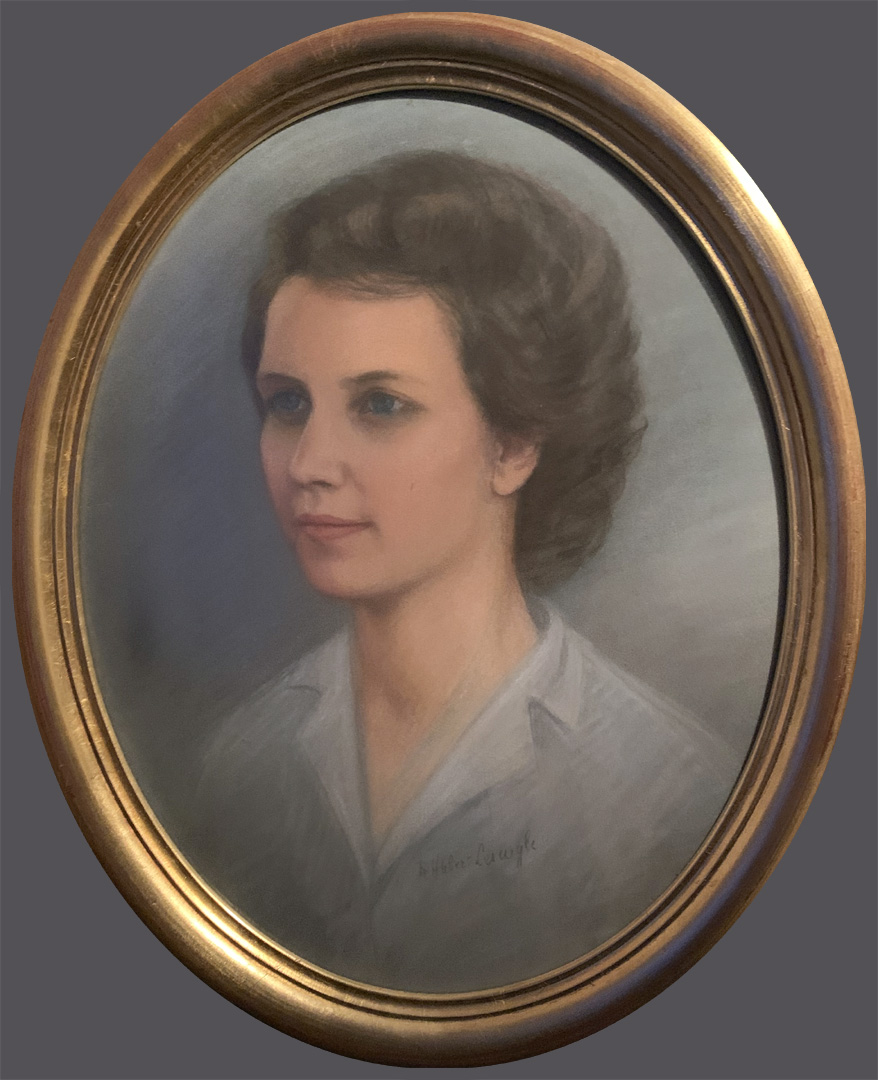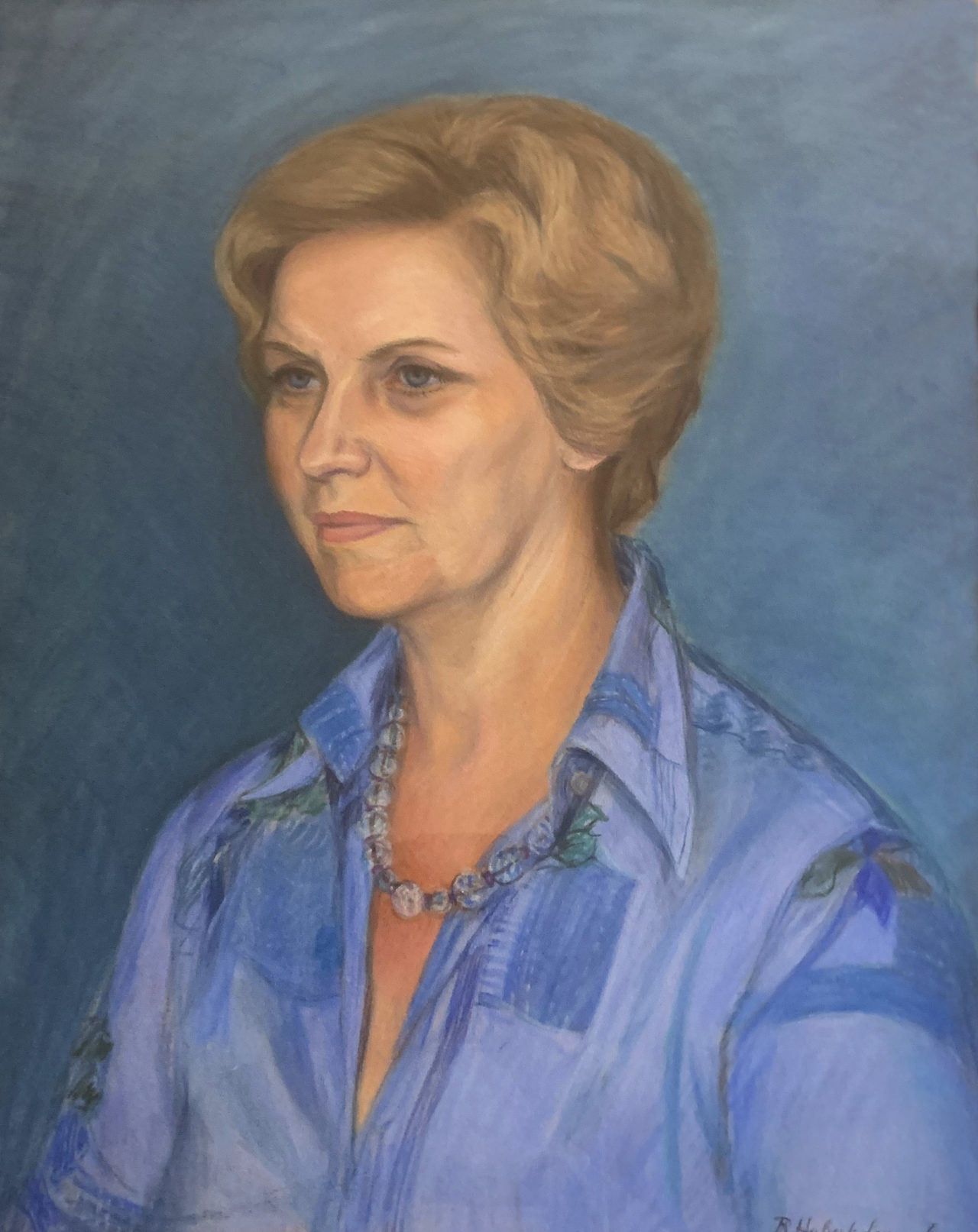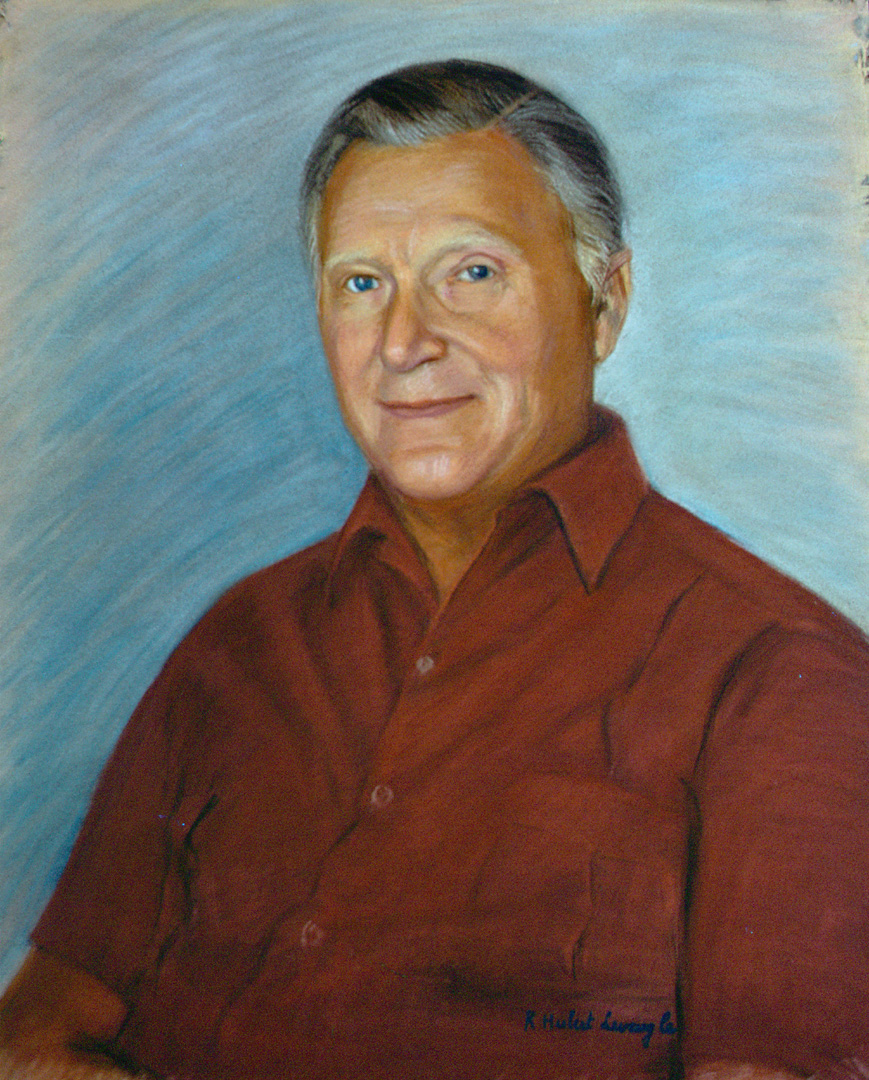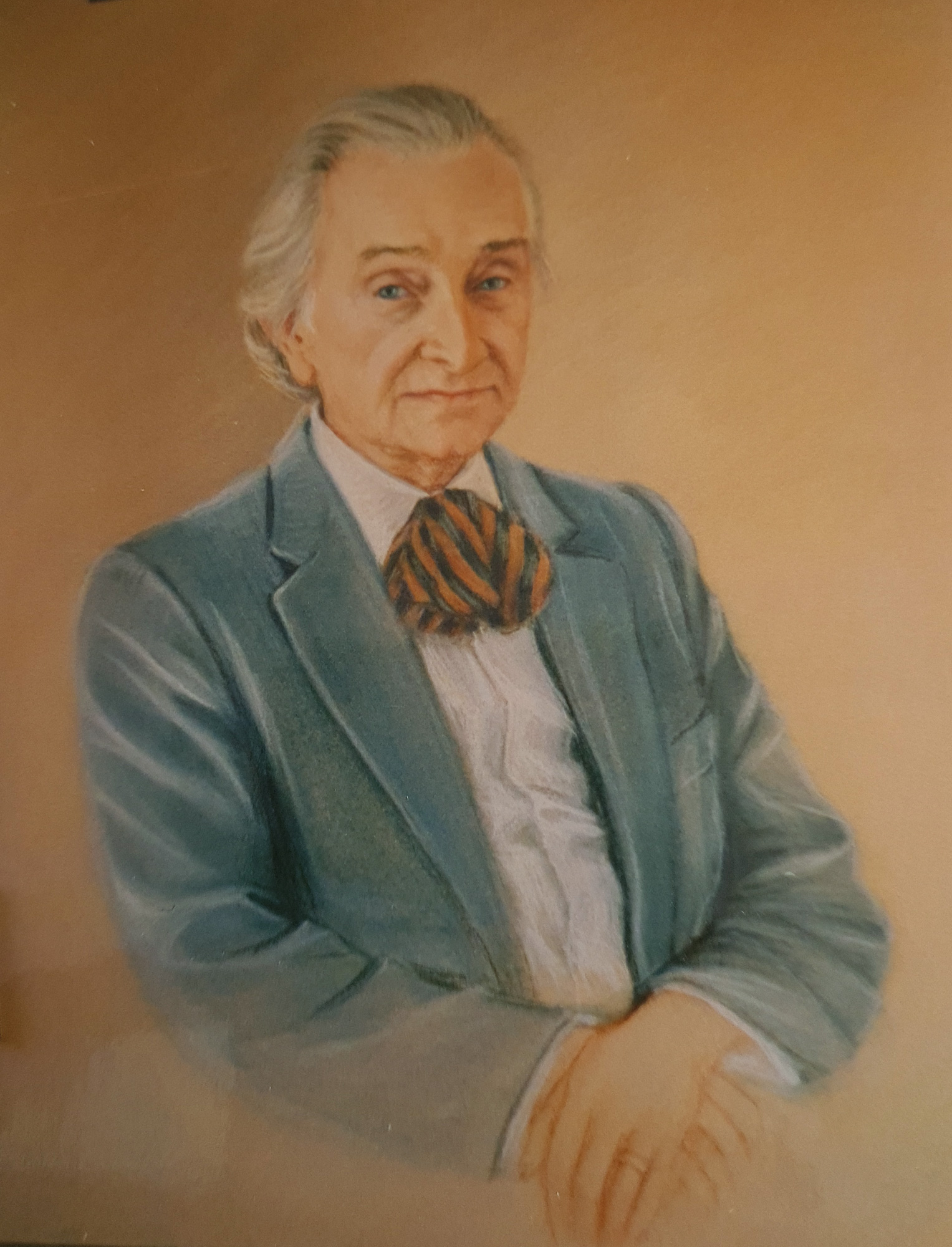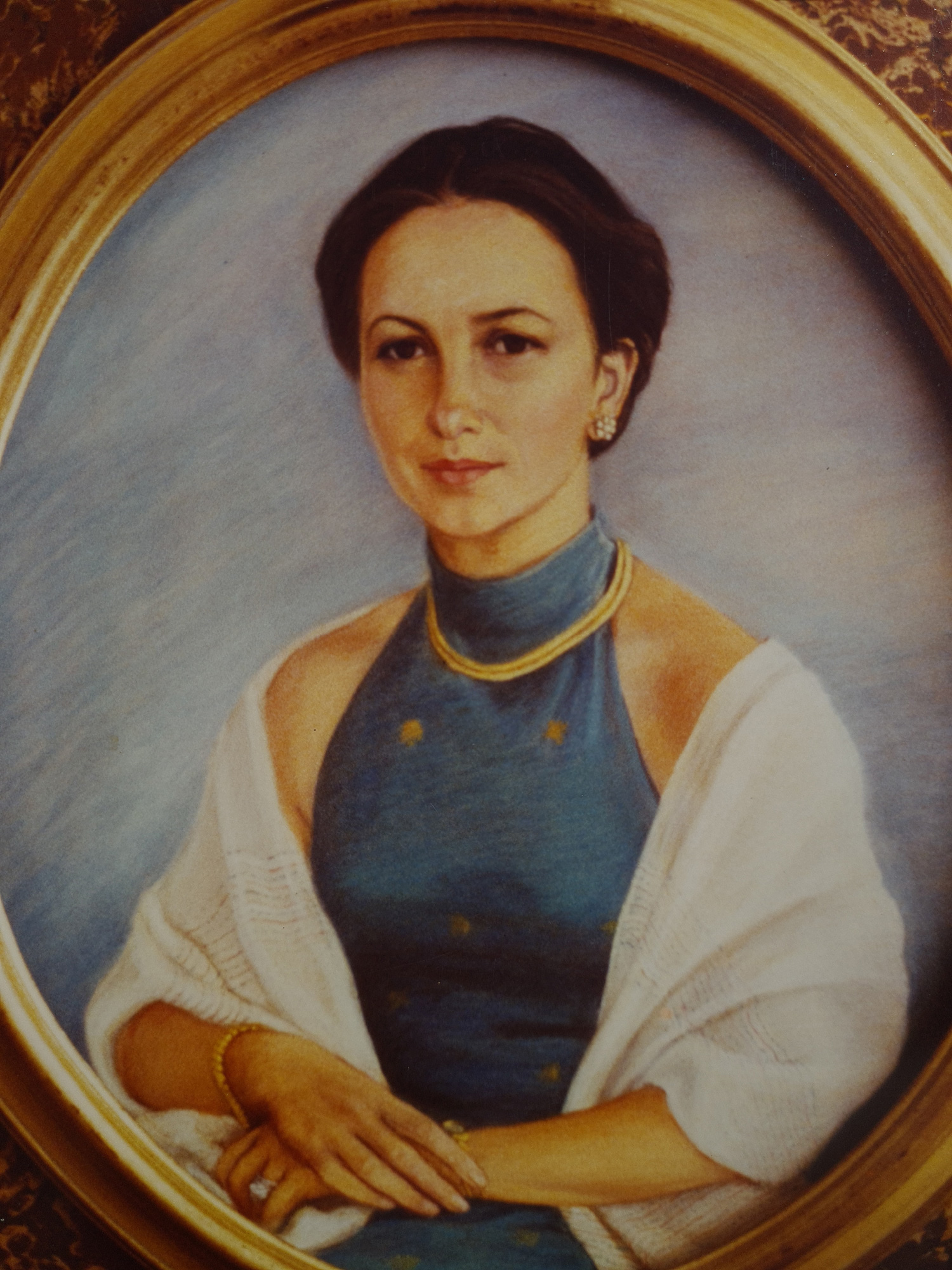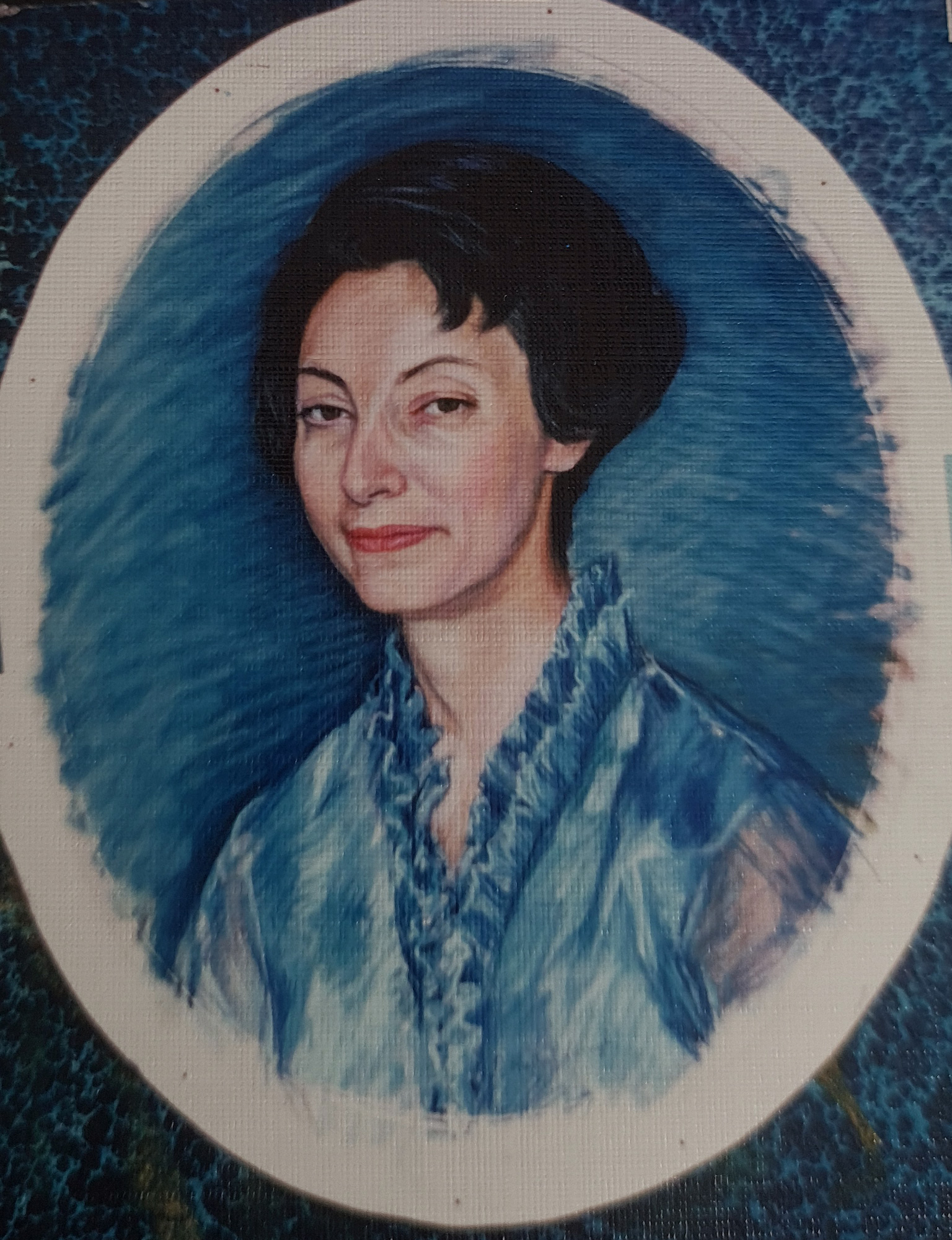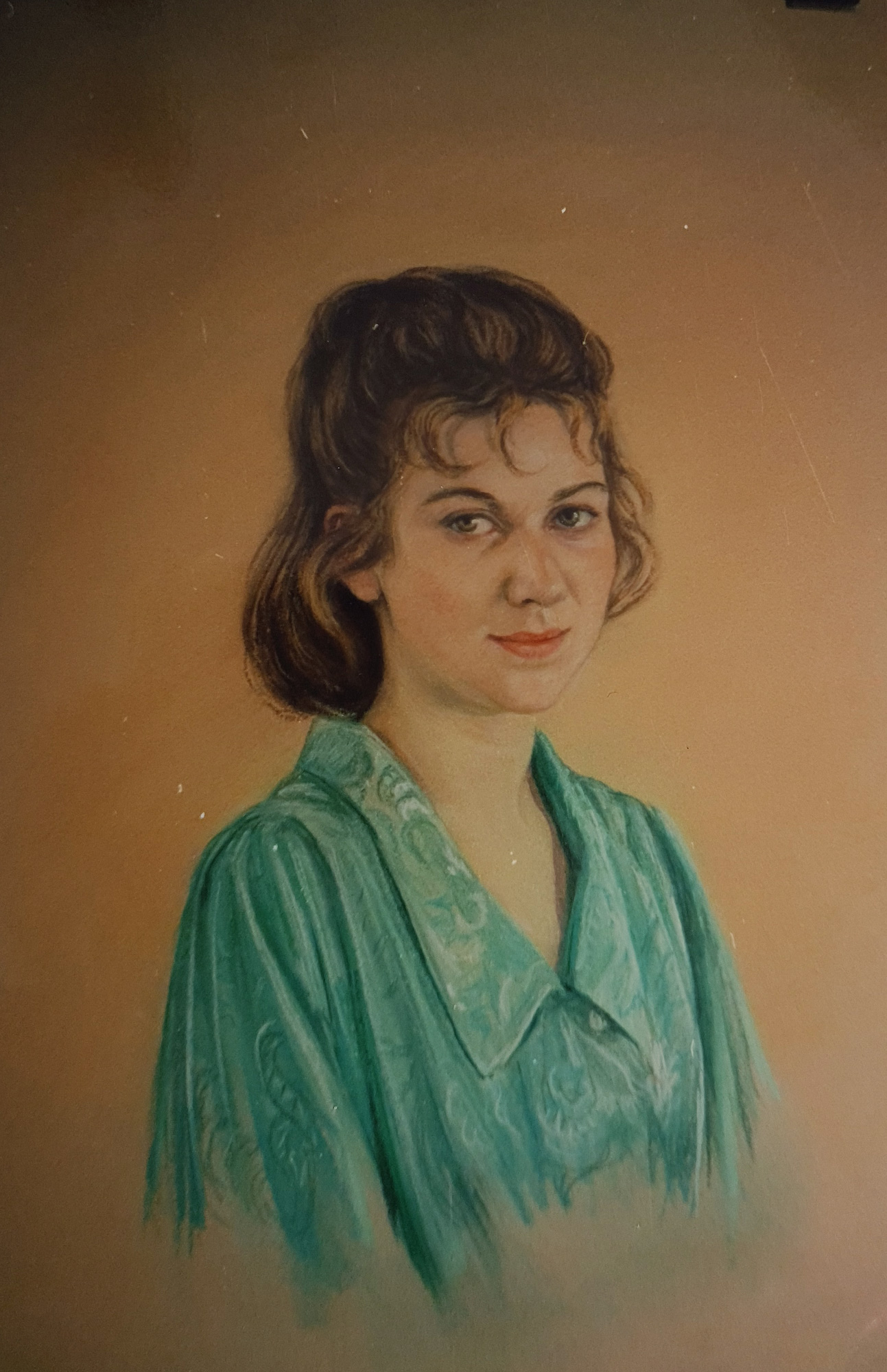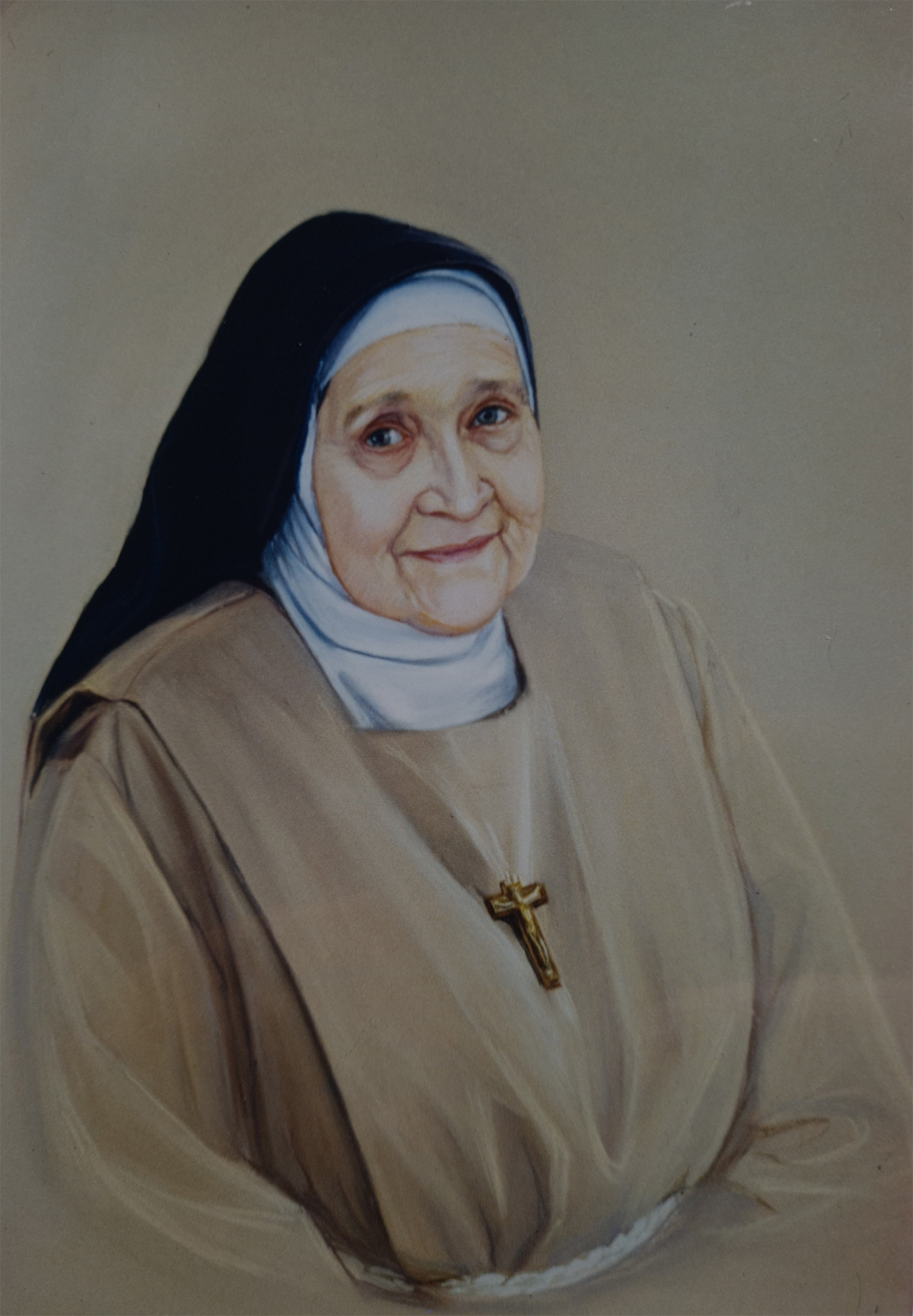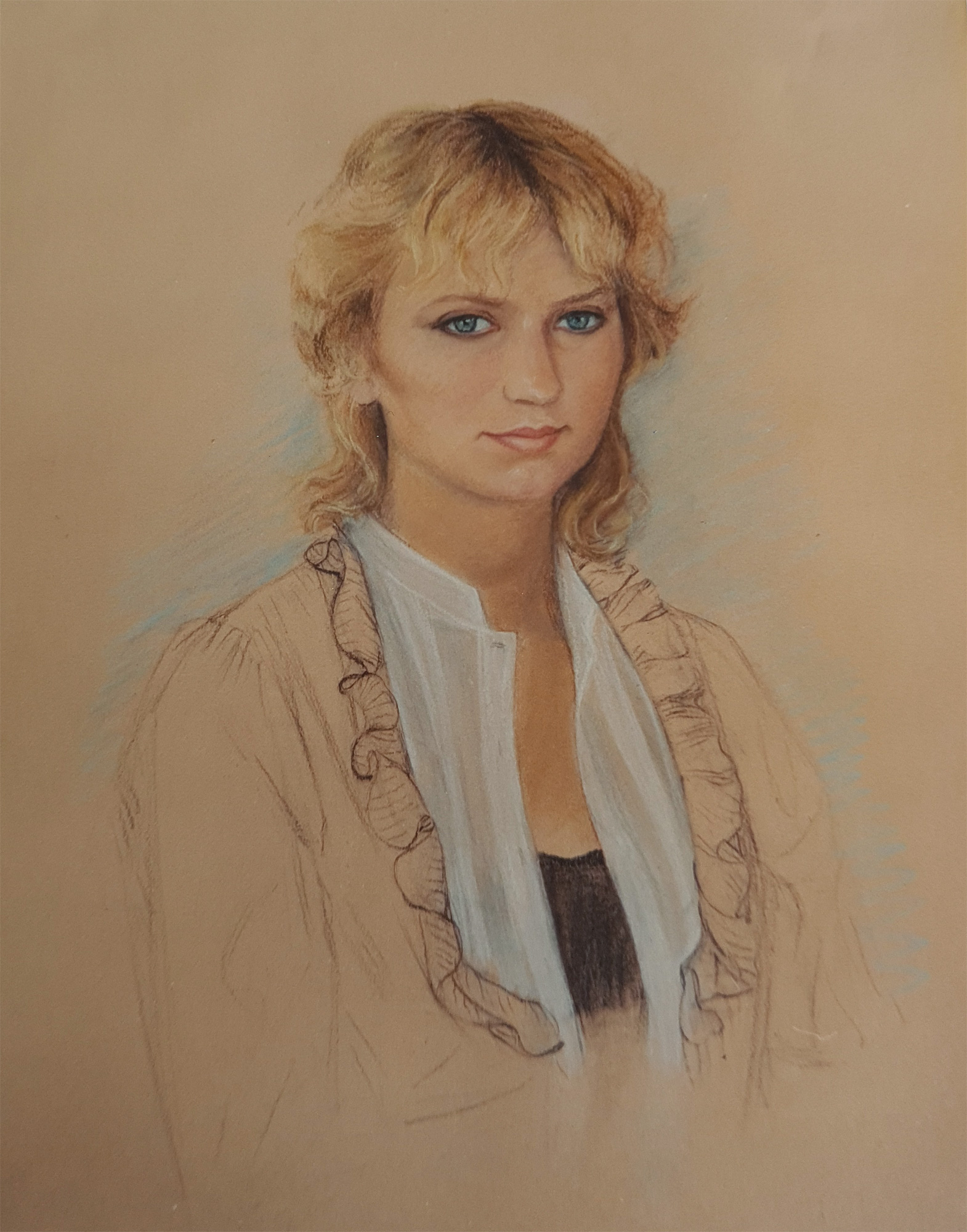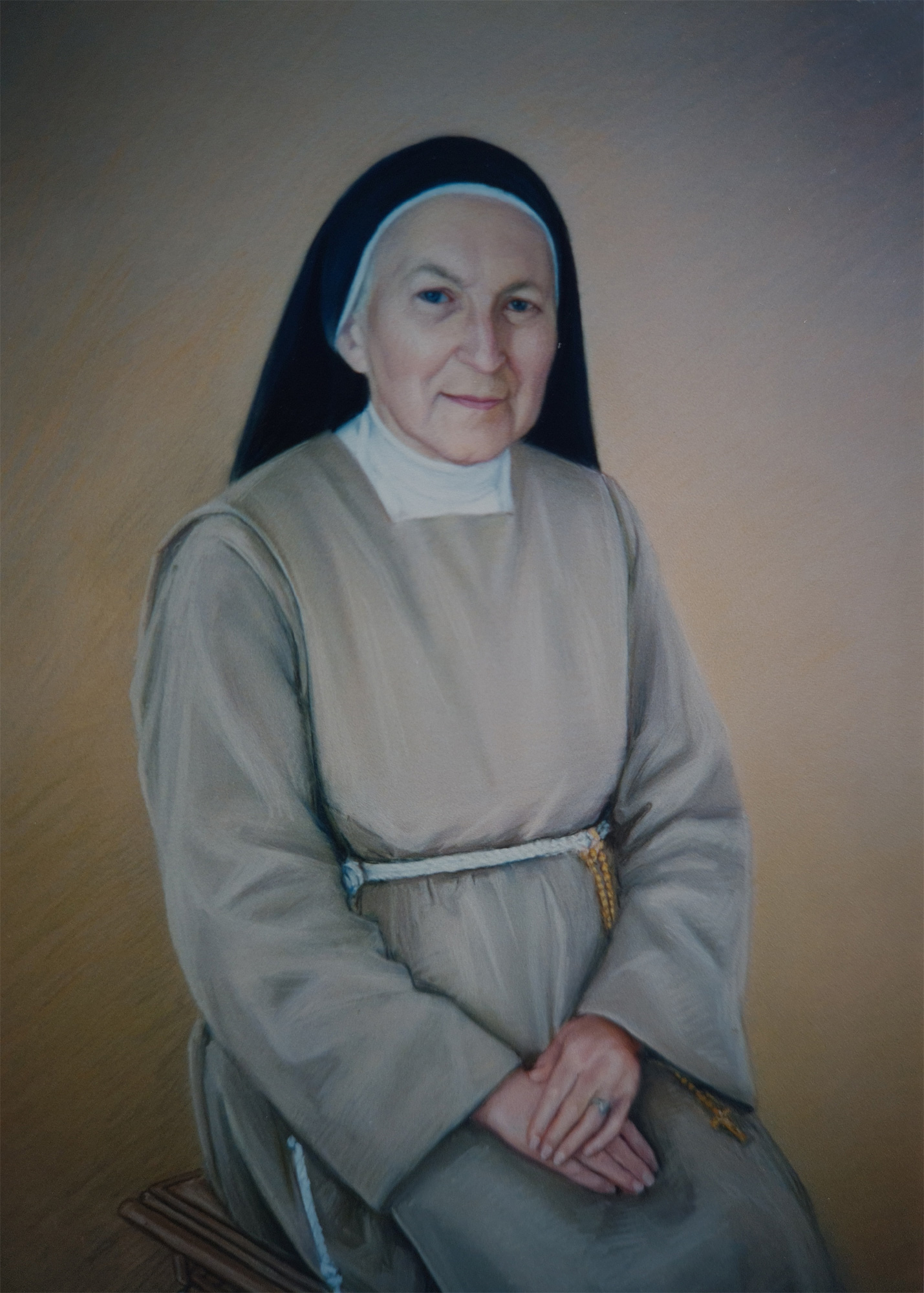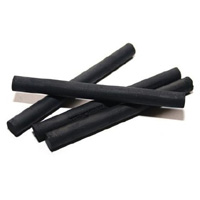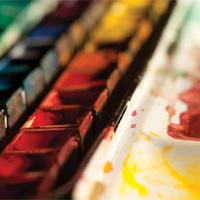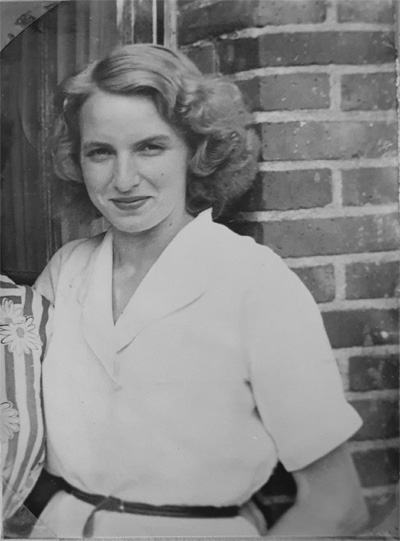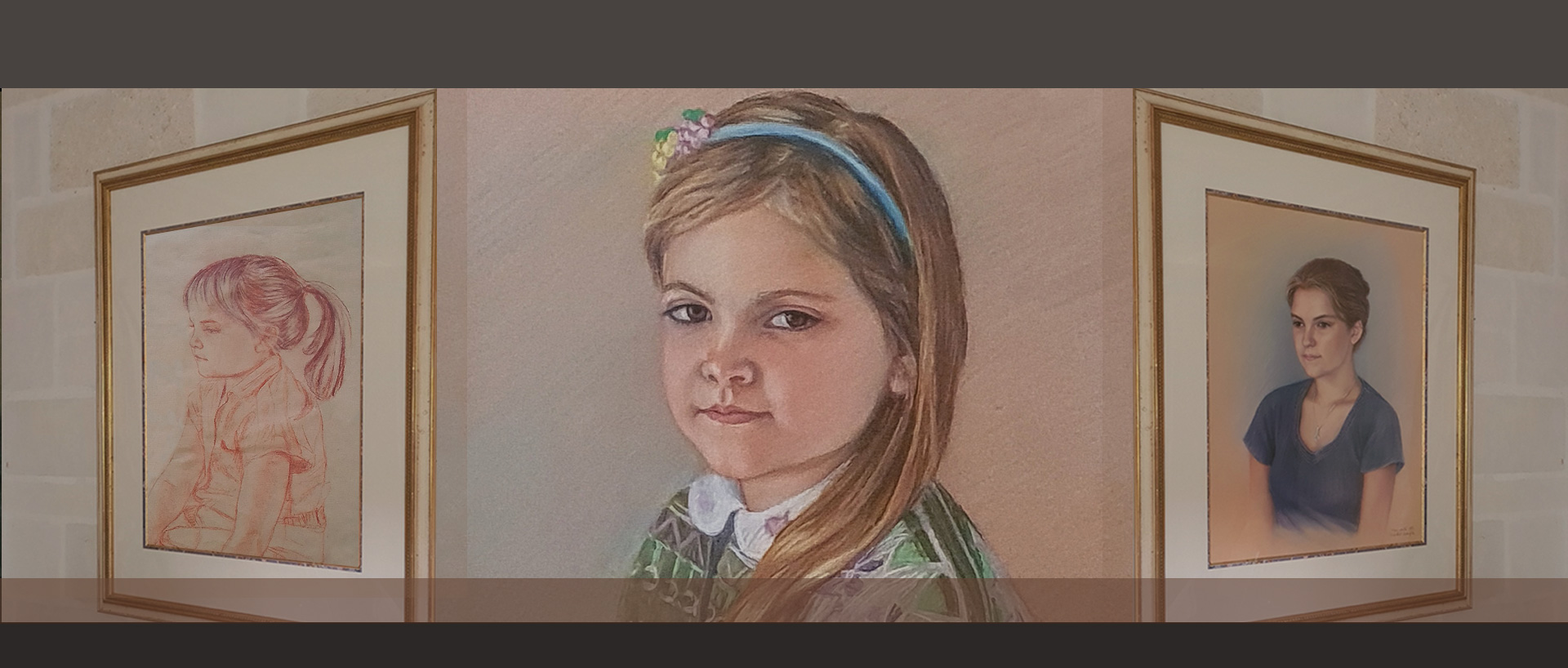
Pastels
Children’s portraits
“Nothing is more delicate to achieve than a child’s face because of the delicacy of its features. Children are Rolande Hubert-Leveugle’s favorite models. She paints pastel portraits or large sketches that are quickly removed. The resemblance is always total and the expression excellent”.
Their names are Eric, Tom, Angelique, Emmanuelle, Yann, Virginie… and they posed for long hours… Some voluble, some sulky, some mischievous, some charming, some impatient … but all curious to see their image take shape and refine on the velvet paper over the posing sessions.
Reproductions from original works
Reproductions from documents
Portraits of adults
Reproductions from original works
Reproductions from documents
Other pastels
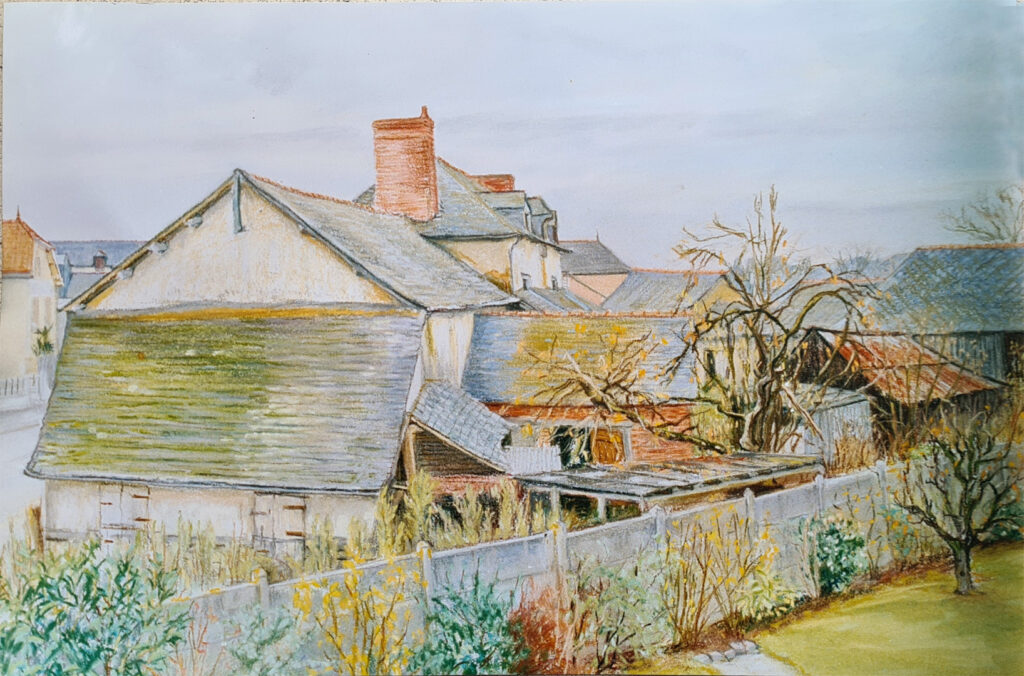
This charming pastel is one of the rare landscapes painted in pastel by Rolande Hubert Leveugle.
It was commissioned by Mr and Mrs Fétu who lived in Betton, a small town near Rennes. They wanted to keep a souvenir of the houses that bordered the back of their garden and whose destruction had been decided. This view is the one that could be seen from one of the windows of the couple’s house.
Geneviève and André Fétu had become friends of Rolande and her husband. Indeed, it was with André Fétu (1898 – 1987), a teacher at the Rennes Conservatory of Music, that André Hubert discovered the saxophone and then the bassoon. Thanks to his teaching and encouragement André, who was not at all born into a musical family, chose to continue his studies at the Conservatoire National Supérieur de Musique de Paris and obtained a first prize in bassoon in 1943. André always remained grateful and loyal to his first teacher from Rennes.
About pastel
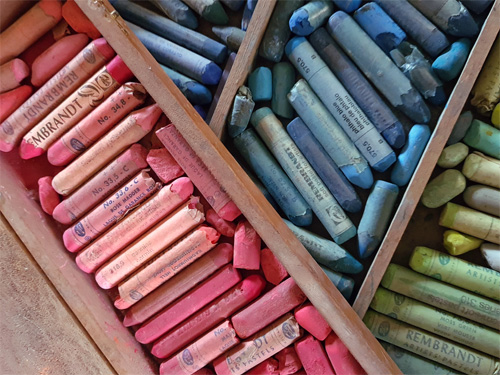
The pastel technique
The pastel technique is not well known by the general public. Pastelists use sticks that are made from a mixture of kaolin paste (very fine clay), pure pigments of mineral, organic or vegetable origin and a binder. This mixture is pressed and molded into a stick shape.
Different supports can be used to realize a pastel but most of the time it is paper with more or less fine grain or vellum (parchment). The pastelist adapts his technique according to the support and the type of pastel (dry, fat, oil) to achieve the effects he seeks. The pastels are not mixed on a palette, the layer of powder is applied directly to the chosen support.
Some great names in pastel
It is believed that pastel was invented in the late 15th century.
In the 15th and 16th centuries, pastels were mainly used to enhance drawings.
In the 18th century
The golden age of pastel portraits was in the 18th century, a period during which this art developed considerably in France. It is under the influence of great artists like Rosalba Carriera and Maurice Quentin de La Tour (1704 – 1788) nicknamed “the prince of pastelists” that the pastel was put back in fashion.
Other examples include:
Jean Siméon Chardin at the end of his career,
Jean Etienne Liotard who used vellum as his favorite support to play on transparency,
Simon-Bernard Lenoir who enhanced his pastels with gouache,
Jean-Baptiste Perronneau without forgetting
Marie-Suzanne Giroust, student of Quentin de La Tour.
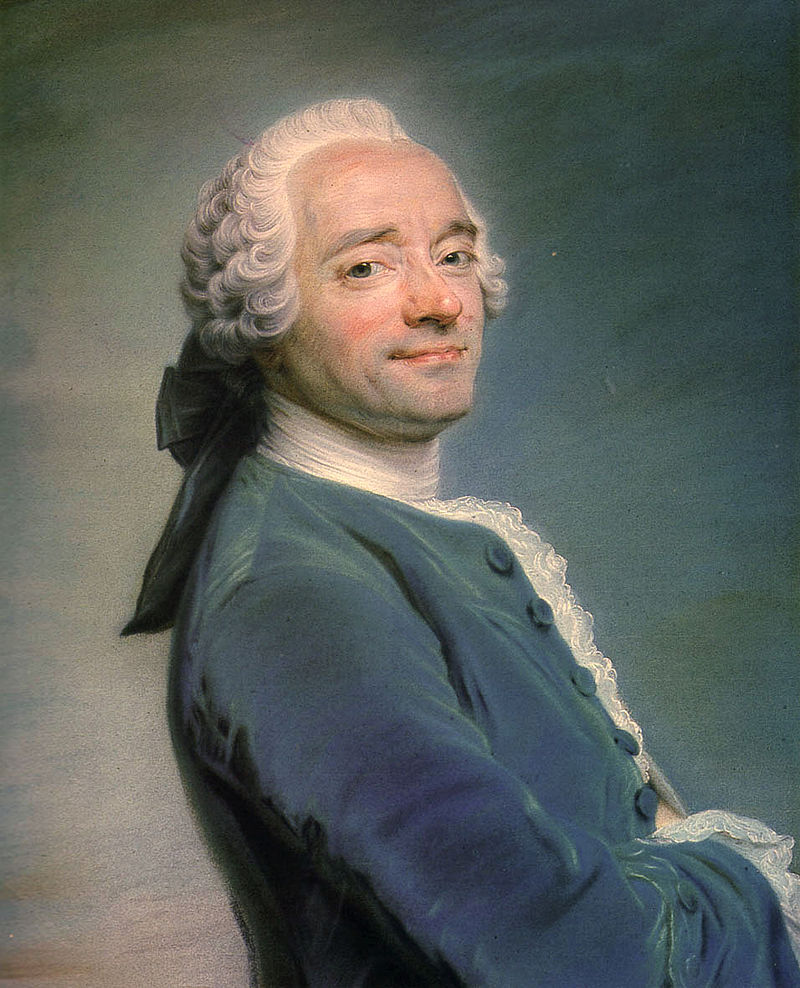
In the 19th century
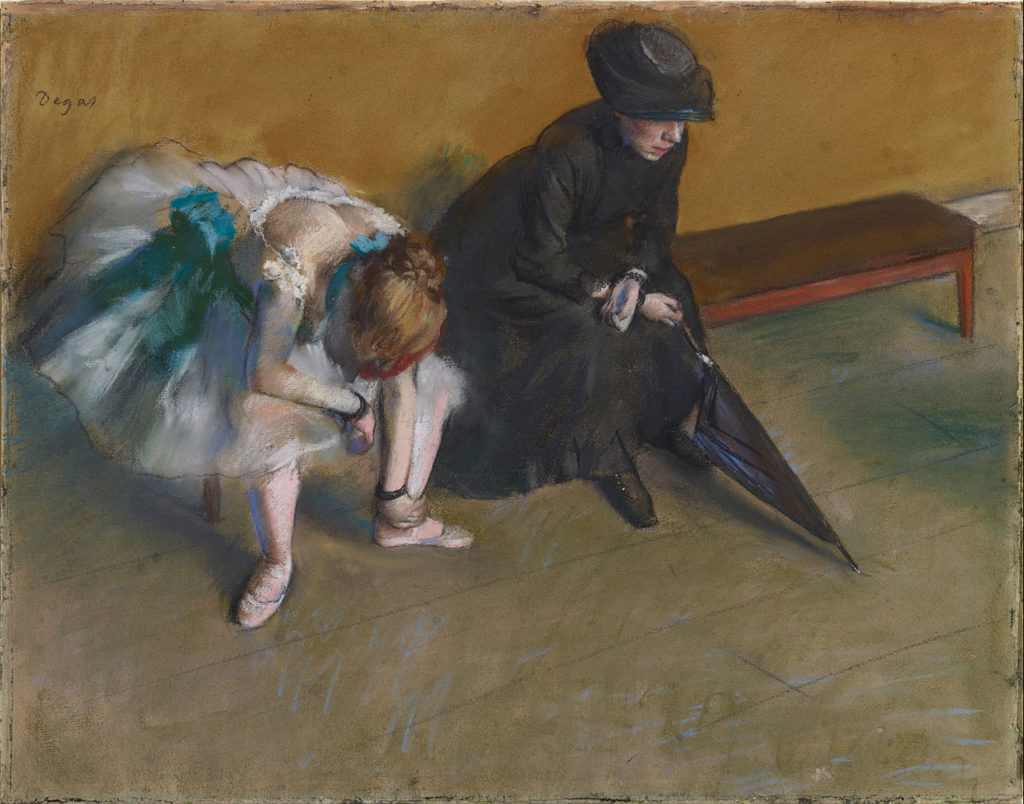
Pastel was relegated to a secondary technique from the end of the 18th century until the 1830s. At that time, talented artists such as Laure de Léoménil, Fanny Alaux, Eugène Giraud and Antonin Moine revived this art.
The revival of pastel really took place in the second half of the 19th century thanks to the great masters who took up this technique. The most famous are Edgar Degas, undisputed master who used pastel, at the end of his career, for its incomparable brightness, Berthe Morisot, Mary Cassatt, Odilon Redon.
Other impressionists such as Eugène Boudin, Monet, Manet, Gustave Caillebote will brilliantly use this technique although they will prefer other mediums.
Videos to go further
Pastels in the Louvre from 17th et 18th centuries
Exhibition The art of pastel painting fom Degas to Redon
Pastels in the 18th and 19th centuries – the adventure of an art
Irving Petlin in his studio, the practice of pastel
The technique of pastel – Musée du Louvre
The oldest pastel factory in the world
Women artist, the strength of the brush

